UNDERGROUND THE
NJLICA’S QUARTERLY PUBLICATION
MEMBER SPOTLIGHT: Justin Kramer and his team at J. Kramer Landscaping help customers create their dream backyards.

PLUS: How to overcome supply chain barriers, keep your team safe in cold weather, and invest in energy-efficient business operations. FALL 2022



CATERINA SUPPLY INC. SALES OFFICE WAREHOUSE AND YARD 1271 Glassboro Road Williamstown, New Jersey 08094 CELEBRATING 94 YEARS OF SUCCESS www.brentmaterial.com WBE Certified (NJ, DE, NY/NJ Port Authority, NYC, NY State, DASNY) WBENC, WOSB, SBE Certified (NJ) SALES OFFICE 325 Columbia Turnpike, Suite 308 Florham Park, New Jersey 07932 TEL: (973) 325-3030 FAX: (973) 325-7360 7:30 A.M. - 5:00 P.M. Monday - Friday EMERGENCY HOURS BY REQUEST WAREHOUSE AND YARD 308 North 14th Street Kenilworth, New Jersey 07033 TEL: (908) 686-3832 7:30 A.M. - 4:30 P.M. Monday - Friday EMERGENCY HOURS BY REQUEST • WATER WORKS • • STORM DRAINAGE • • SANITARY SEWER • • EROSION CONTROL • www.caterinasupply.com SUCCESS THROUGH SERVICE SINCE 1927 7:00 A.M. - 5:00 P.M. Monday - Friday EMERGENCY HOURS BY REQUEST TEL: (856) 728-0171 FAX: (856) 728-8275 CELEBRATING 37 YEARS OF SUCCESS NJ Certified WBE/SBE, DE Certified WBE/SBF, PA Certified SDB-W/SBF
Grassi’s Construction advisors and accountants provide the industry knowledge and guidance that construction professionals need to make confident business decisions.
 Oliveri, CPA, CCIFP, CFE, MBA Partner, Construction Practice Leader grassicpas.com/construction
Oliveri, CPA, CCIFP, CFE, MBA Partner, Construction Practice Leader grassicpas.com/construction
Advisory | Tax | Audit
Carl
Certainty is what we have delivered to the New Jersey Construction industry for over 40 years.
IIn May I had the privilege of attending a Pennsylvania 811 Safety Day. Along with Jerry Biuso, LICA executive director, and Eddy Mayen, executive director of the Veterans Foundation, we manned a booth for PALICA to promote PALICA and the foundation. A good day of recruitment and promotion became a great day as Monica Rakoczy of EnterTraining Solutions gave the keynote presentation. If you have never attended one of Monica’s safety training sessions, you are missing something.
Monica never does the typical boring session, and this day was no different. Minutes into her talk, she made an unusual statement. She told us that she alone could not make our industry safe. She needed our help. Her premise was simple: a person could attend a trench safety program and leave without retaining much of the specifics. Yet if that same person were told a story about a trench collapse that one of us witnessed and explained why the trench collapsed, the inevitable injuries that occurred, the setback to the schedule, and the cost to the company, the odds that that person would never enter an unsafe trench again went to a million to one.
Monica was asking all of us in the room to be storytellers. To put away our phones and laptops and get personally involved with another person. I am pretty sure she was looking at me when she said, “All you ‘old timers’” — which she quickly changed to “experienced people” — “need to tell your stories.”
I thought about how true this is. Our industry has always been one based on the experienced handing down their knowledge to the newcomers. I also thought about how important this is to LICA. I, like all presidents before me, have one primary goal, which is to increase membership and recognition of the LICA brand. I will repeat Monica’s words: I need your help. Become a storyteller.
We all have a story about why we joined LICA. A story about what we have gained from being a member. A story about how another LICA member helped us out
of a jam. A story about lifelong friendships we have made across the country. A story about how we have become a more profitable and safer company because of our membership in LICA. A story about why many of us decide to help run the state chapters and ultimately help run the National Association.
While I was speaking to a possible new PALICA contractor, I mentioned how PALICA was running a forklift certification course, and if he were a member he could save $150, more than a third of the dues. This is not something one sees in the benefits list, not something he would know if I did not tell him. NJLICA recently ran a defensive driving course for free for its members. Several members brought their employees. The company would not save any money on its auto liability insurance, but the employees could save 5 percent on their personal policies.
This is an incredible perk for an employee, but again not something listed in benefits. Both instances are of a story that needs to be told. This does not happen when a brochure is handed out, when a mailing is sent, when an email is sent, or when we simply ask someone to join LICA. There needs to be a story. A personal connection. A connection that needs to continue after you convince someone to become a member of LICA.
Become a storyteller. At the coffee shop, at a meeting where new potential members are present, at a field day, at the equipment dealer, anytime you run into a contractor. Thousands of stories are told at national meetings. I know we all love to tell them. Anyone who has come to know me knows I live to tell stories. Take your stories outside of LICA. Hand down your reasons for being a member, and do not for get to hand down how to be safe at the work site both to LICA members and anyone on your sites. Become the voice of LICA and safety. Help Monica and me do our jobs.
Chris Wagner President, National LICA
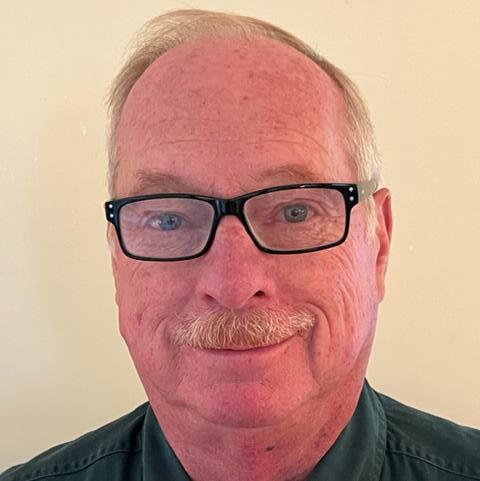
4 FALL 2022
LETTERS
NJLICA BOARD OF DIRECTORS
Ron Garofalo, President DAG Mobile Aggregate Recycling, Inc.
Dennis Mikula, Jr., Vice President Mikula Contracting, Inc.
William J. Esposito, Historian Espo's Tree and Crane Service
Frank C. Del Guercio Tilcon NY
Warren Gonzalez Foley, Inc.
Shelly Hewson Hewson Landscape, Inc.
Frank Horan Groff Tractor Mid Atlantic, LLC
Mark Krutis
Tom Krutis Excavating, Inc.
Bob Manis North American Aggregates
Joe Mayers Septic Experts, LLC
John Rothberg L.N. Rothberg & Son
Dave Vander Groef Wantage Excavating Co., Inc.
Chris Wagner Twin Construction, LLC
Buddy Freund, Executive Director

FALL 2022 5 CONTENTS FIELD GUIDE Legislative News 8 Money Talks 9 Safety Perspectives 13 Risk Management 14 Equipment Manual 16 Legally Speaking 17 FEATURES Member Spotlight 20 NJLICA News 22 DISPATCHES Member Benefit 28 New Members 29 Event Recap 30 Upcoming Events 32 Patron’s Directory 32 Contact Information 37 Advertiser’s Index 37 COVER PHOTO BY BRADY ROGERS, UNSPLASH; PHOTO PAGE 5 BY BILLY FREEMAN, UNSPLASH

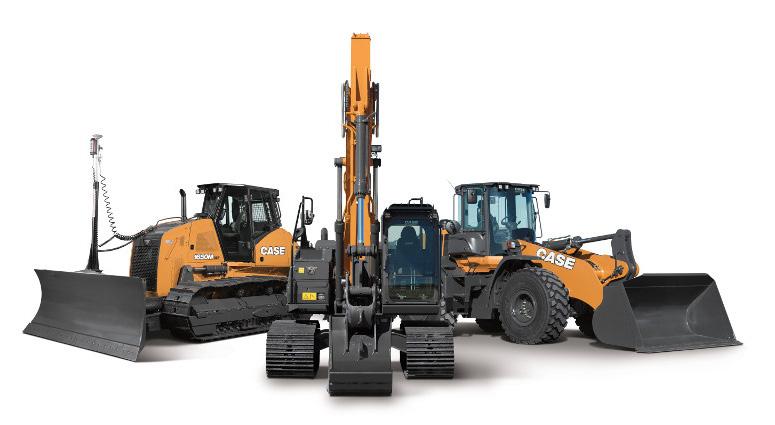






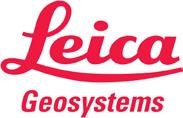



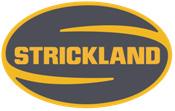


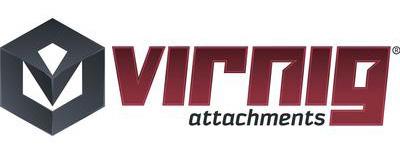
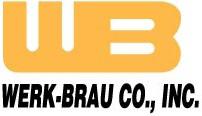









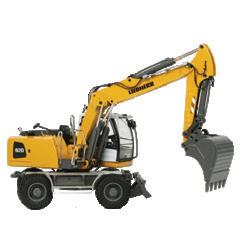
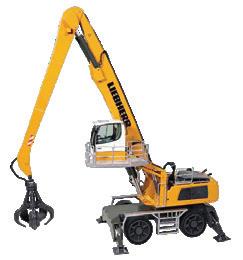

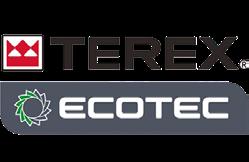









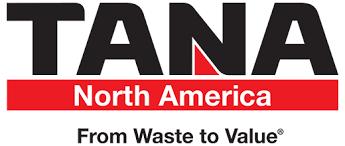
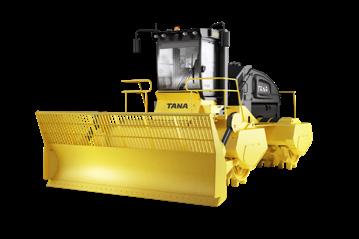
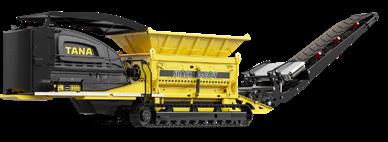

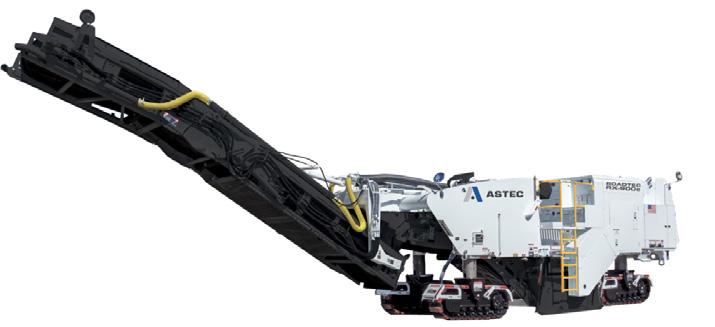
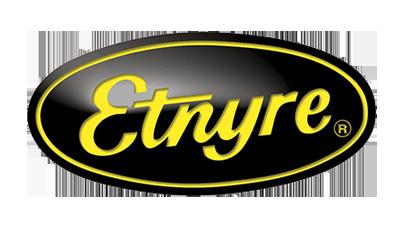
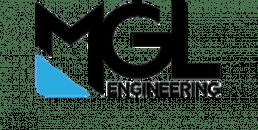

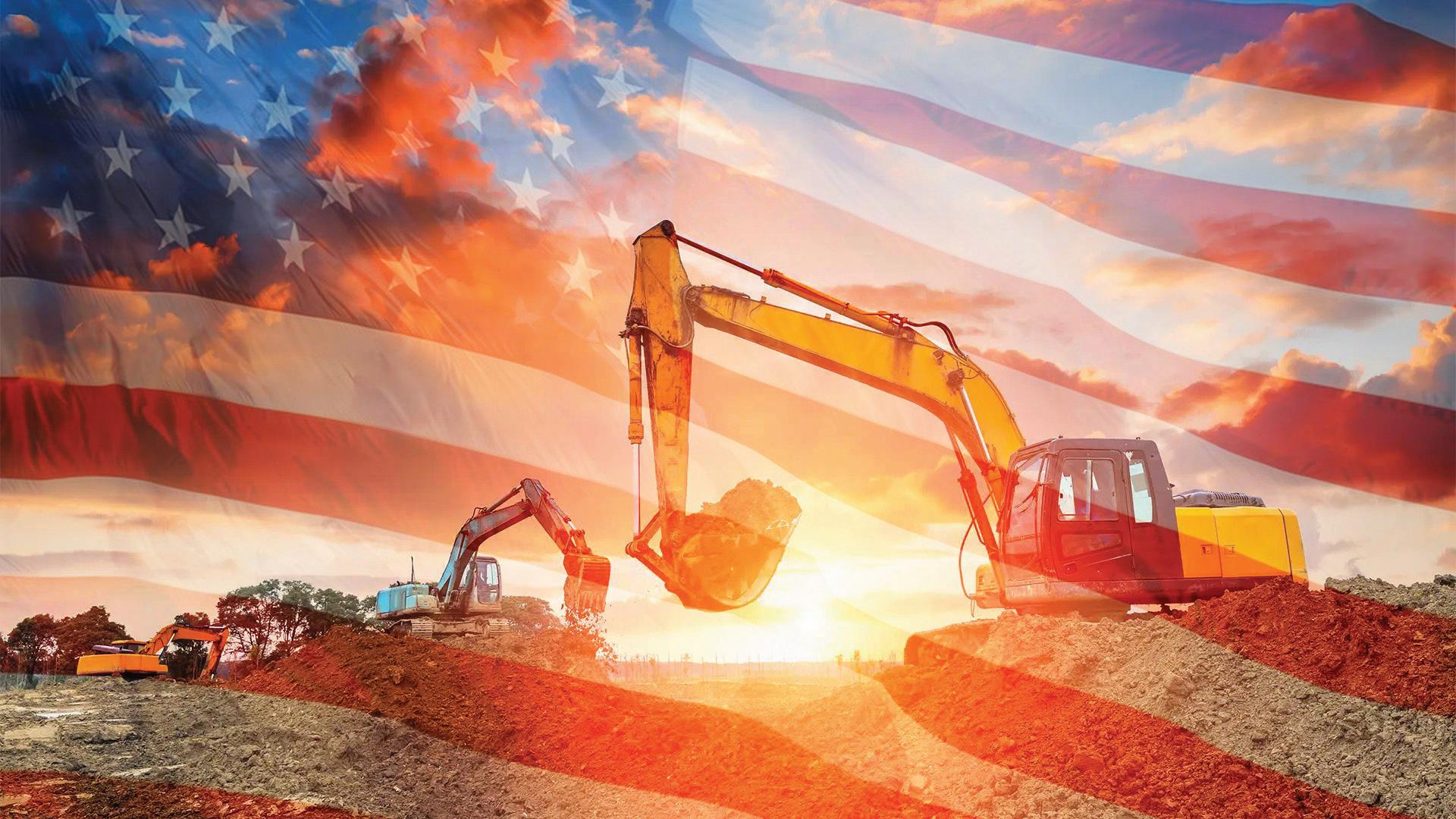
Backhoe Loaders | Compact Track Loaders | Compaction Equipment | Dozers | Excavators Forklifts | Skid Steer Loaders | Tractor Loaders | Wheel Loaders | Attachments Crawler Loaders, Crawler Tractors, Excavators, Wheel Loaders and Material Handlers Asphalt Pavers, Asphalt Screeds, Cold In Place Recycling, Cold Planers, Material Transfer Vehicles and Stabilizers / Reclaimers Asphalt Rollers, Soil Compactors, Plate Compactors, Rammers, Ride-On Vibratory Rollers and Walk-Behind Rollers Grinders, Drum Chippers, Disc Chippers, Flails, Blower Trucks, Stacking Conveyors and Terra Select Screens Crawler Carriers with Rotation Track Conveyors, Crushers and Screens Totowa, NJ: (973) 785-4900 | Freehold, NJ: (732) 780-4600 Vineland, NJ: (856) 697-1414 | Folcroft, PA: (610) 586-2710) Compact Track Loaders, Compact Wheel Loaders and Mini Excavators Articulated Trucks Landfill Compactors & Shredders


NJLICA • PO Box 166 • Succasunna, NJ 07876 • www.NJLICA.org NJLICA is looking for LABORER AND OPERATOR APPRENTICES New hires and/or existing employees or Hire an apprentice from the NJLICA Apprenticeship Program How Can Apprenticeship Training Help Your Company? • Instill your company’s culture and retain workers • Recruit and develop a diverse and highly skilled workforce • Improve productivity, profitability, and your bottom line • Reduce tur nover, improve loyalty, and retain top talent • Demonstrate investment in your community This Education Has Two Facets: On The Job Training and Classroom Instruction Your Apprentice will Learn and Produce Better Quality Work, Moving You Forward at No Additional Cost to the Employer! For Questions Or To Enroll Your Apprentice Today Simply Contact: Buddy Freund, Executive Director At Buddy@govisionstrong.com 973-630-7600
STATE DOTS TACKLE ISSUES BEYOND FUNDING
Having represented highway contractors for many years, I know that they are bottomline, straight-to-the-issue kinds of people. When it comes to major highway bills, their focus is on the over all funding of the bill and not often focused on all the other policy issues that impact their work.
This focus on bottomline funding has been the case when the Trump Administration proposed record funding and the current Biden Administration worked with Congress to enact a historic funding level for all infrastructure programs. But now that that funding is in place and being implemented, state department of transportations are sharing with Congress their non-funding high way concerns.
Improving safety for all road users
The new highway bill provides an increase in funding and flexibility for the Highway Safety Improvement Program (HSIP) that will allow states to expand their efforts to identify and implement improvements to our surface transportation infrastructure that will counteract the daily tragedies occurring on our roads. In addition, the increases in funding for infrastructure safety activities along with new programs, such as the Safe Streets and Roads for All Grant Program, provide more opportunities for states to work together to address traffic safety throughout the planning, design, operation, and maintenance of all public roads. The new law clearly calls out the principles of the Safe System Approach: that no death or serious injury is acceptable; people make mistakes and are vulnerable; we all share responsibility in preventing serious crashes; we need to be proactive in our efforts; and we need to have redundant safety strategies in place.
Build America, Buy America
The state DOTs strongly support the expansion of America’s manufacturing capacity, promoting domestic jobs and encourag ing economic growth. At the same time, we firmly believe there must be a deliberative process for implementing the Build Amer ica, Buy America (BABA) Act that ensures timely and successful delivery of critical infrastructure projects funded through the new law. States appreciate that USDOT listened to concerns regarding potential delays and anticipated disruptions to project delivery by providing a temporary, 180-day waiver for the new category of construction materials in May 2022. However, states continue to have significant concerns regarding the readiness of industry for this transition and the tremendous potential near-term negative impact on the delivery of needed transportation projects in com munities around the country. States believe an extension should
BY NICK YAKSICH
come with a collaborative action plan for federal agencies to work with recipient agencies and industry contractors, suppliers, and manufacturers to identify construction materials lacking in shortterm domestically-manufactured availability, with the recognition that these latter parties have already undertaken efforts in this area.

Impact of inflation on deliver of the IIJA
As the nation’s economy continues to reel from the effects of the COVID-19 pandemic, state DOTs and their partners continue to grapple with an unprecedented construction material supply chain crisis that has significantly driven up material and bid costs. According to a recent analysis of government economic data by the Associated General Contractors of America, the prices of materials and services used in new, nonresidential construction leaped nearly 17 percent in June 2022 from year-ago levels. This figure indicates the lead times for procurement and delivery of many construction materials have dramatically increased over the last year, leading to mass unpredictability in the availability and price of some of these materials. Material cost increases have ranged from 15 percent to a doubling or tripling in some markets during this time. From manufactured steel, plastic and steel piping, and paint, to glass beads, lumber, and much more, every region of the country is facing extreme difficulty in procuring any number of crucial project materials.
As a result, crucial infrastructure projects across the country run the risk of delay. State DOTs and the construction industry are unable to foresee disruptive world events, spiking energy prices, and soaring inflation. The impacts of this have been especially devastating to small and disadvantaged business enterprises that lack the resources to absorb these unexpected costs. While the transportation industry has deep experience in managing risk, the events and circumstances of the last two years have led to such unique unpredictability in the supply chain and market that con tracting firms of all sizes are at greater risk of business failure now than in recent history. While most agree that the challenges our industry is facing with supply chain constraints and inflation appear to be leveling off to a limited degree, the transportation industry will continue to face challenges. Likewise, it is important to identify solutions to ensure the success of the IIJA and to be ready for future supply chain or inflationary challenges
Developing the workforce of today and tomorrow
Strategic workforce management—the systematic approach used to predict, prepare for, and manage workforce needs—is an urgent
BY JOSHUA SUKOFF, UNSPLASH;
BY DMITRY DEMIDKO, UNSPLASH
8 FALL 2022
PAGE 8
PHOTO PAGE 9
PHOTO
NEWS
LEGISLATIVE
and critical issue. State DOTs across the nation have increasingly expressed concerns about aligning the needs and priorities of the state DOT with those of its workforce in order to place the agency in the best position for ongoing success. As technology and innovation advance, and public expectations and demands for more nimble service delivery rise, agencies will need to reimagine their workforce. State DOT constituents are increasingly demanding transparency, accountability, increased personalized communication, and on-demand service delivery. The new technologies associated with this work require different skillsets and competencies than those of traditional state DOT employees. Additionally, as the new generation entering the workforce seeks agility and innovation, and brings a service-delivery mindset, state
MONEY TALKS
DOTs need to adjust to the culture of the new workforce to recruit and retain these employees. Restructuring, increased diversity and inclusion, greater employee buy-in and collaboration, and organizational culture change may be required for state DOTs to succeed in the future.
These challenges show that record investment can’t buy all the happiness, but states and the highway industry continue to address many challenges in providing safe and efficient highways.
Nick Yaksich serves as the director of government affairs for LICA.
RENEWABLE ENERGY VS. ENERGY EFFICIENCY FOR BUILDING OWNERS
Building owners are learning how they can cut emissions or even go net-zero while at the same time reducing energy costs. Elec tricity generated from fossil fuels and natural gas poses a signifi cant environmental threat. And though there is a lot of talk about converting to renewable energy, there isn’t enough time spent considering the benefits of investing in energy-efficient business operations. Yes, converting to renewable sources reduces emis sions, but only by investing in energy efficiency can you reduce emissions and energy costs.
The current rate of greenhouse gas energy usage in commer cial buildings is startling, with 16 percent of 2020 greenhouse gas emissions (CO2e) attributed to electricity and natural gas usage. Furthermore, the Commercial Buildings Energy Consumption Survey estimated that commercial buildings consumed 1.28 tril lion kWh of electricity, representing 35 percent of the electricity consumed in the United States at $0.11per kWh. This translates into a staggering $141 billion spent on electricity while generat ing over 600 million tons of CO2e.
The primary sources of CO2e emissions from buildings are computers and office equip ment, office lighting, and heating and cooling. For buildings with onsite refrigeration, HFC re frigerant R-410a and electricity are the primary sources of CO2e.
By understand ing the sources of CO2e, building own ers can take action to decarbonize while simul taneously reducing costs.
BY JOE HOLMAN
Building owners can accomplish decarbonization in two ways: buildings can convert to renewable energy, or they can invest in energy-efficient strategies.
Converting to Renewable Energy
The U.S. renewable energy market consists of three renewable energy options. A building can be converted to renewable electricity with the installation of a renewable energy system such as rooftop solar, or the owner can convert to renewable power from the local utility or purchase renewable energy credits. By converting to renewable energy, an owner will significantly reduce the building’s CO2e footprint and may even realize a small per kWh saving. Which renewable option is best suited for a particular building depends on many factors, including the possibility of receiving government subsidies or favorable renewable energy pricing. The primary goal of converting to renewable energy is to reduce emissions associated with electricity as it does not change the amount of energy used by a building.
Energy Reduction Strategies
Energy reduction strategies are designed to reduce energy usage, which translates into reducing energy costs and emissions. Energy reduction is the optimal way for a building to reduce its costs and environmental footprint. Additionally, the reduction in energy costs typically finances the required investment, and the benefit (ROI) is measured in its payback period. These strategies are broken out into near-term and long-term strategies.
Near term reduction strategies

• Install updated lighting fixtures, LED bulbs, and occu pation sensors
• Upgrade to ENERGY STAR-rated appliances like refrigerators, dishwashers, and laundry machines
• Install solar shade window treatments to reduce cooling energy usage
• Paint roof white or another solar reflecting color
FALL 2022 9 PHOTO PAGE 9 BY DMITRY DEMIDKO, UNSPLASH
Near-term energy reduction strategies are characterized by their low cost and short payback period. The energy cost saving from these initiates can also be used to fund longer-term invest ments that require more up-front capital and have more extended payback periods.
Long-term investments include:
• Window replacement and overall weatherization of buildings
• Upgraded HVAC systems, including installing indoor controls
• Updated heating systems, including water heaters
• Convert 100 percent of building utilities to electric
• Install a “cool roof” to reduce solar radiation
Long-term strategies typically require significant upfront capital and have longer payback periods but higher ROI. They reduce monthly utility costs, lower a building’s carbon footprint, and will likely improve indoor comfort for occupants. They may also reduce maintenance costs and mechanical issues.
Emissions for buildings can be reduced by a building owner either converting to renewable energy or investing in energy-effi cient strategies. Converting to renewable energy will only reduce a building’s emissions and will not impact energy usage or costs. Investing in energy efficiency is the only way to achieve both, a significant cost savings while reducing a building’s emission footprint. Ideally, a building owner will do both—converting to renewables and investing in energy-efficient strategies.
Whether a building owner decides to convert to renewables or invest in energy efficiency improvements, the effects of climate change will be reduced. And by doing so, the overall value of the building can increase while costs are lowered simultaneously.
The charts below illustrate the percentage of buildings using the various energy-efficient strategies for windows, lighting, and HVAC.
Joe Holman is the ESG practice leader at Withum, a nationally ranked public accounting firm with extensive experience working with contractors.
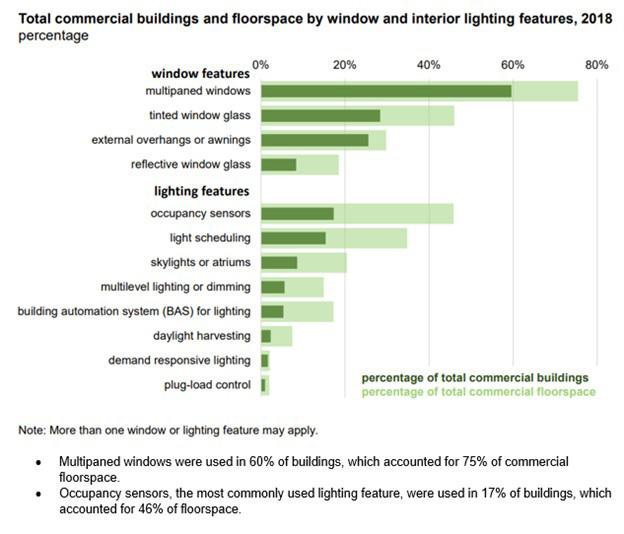
10 FALL 2022
INDUSTRY OUTLOOKS REVEALED IN GRASSI SURVEY
Grassi’s 2022 Construction and Architecture & Engineering (A&E) Survey uncovered the latest strategies that general contractors (GCs), subcontractors, architects and engineers are deploying to address price fluctuations, cash flow challenges, labor costs, and more.
The findings were released in an authoritative report to help leaders benchmark their businesses, understand today’s risks and discover strategies that drive growth and innovation.
Here are the key takeaways the survey revealed.
Cautious Industry Optimism
Overall, surveyed companies are optimistic about the state of the industry and feel the worst of the pandemic’s financial impact is behind them. A&E firms are especially optimistic that revenue will increase in 2022.
Ongoing challenges call for cautious optimism as the econo my continues to lag. The most common challenges reported were supply chain disruptions, inflation, and cost increases. Subcon tractors and A&E firms have been hit hardest, with around one in four reporting cost increases of 20 percent or more.
The GC Advantage
BY CARL OLIVERI
The survey emphasized the advantages GCs gain from higher revenues. GCs have the capacity to review cost and profitability more frequently and are also more likely to embrace technology. Almost 90 percent have invested in technology to streamline operations and improve efficiency, compared to 61 percent of subcontractors and 75 percent of A&E firms.
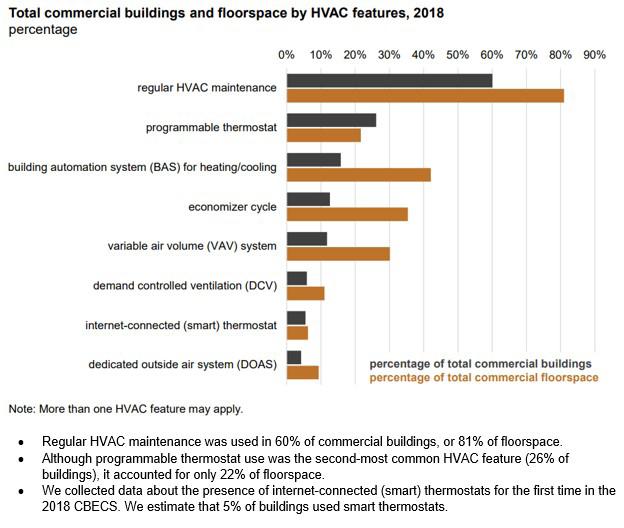
However, many other strategies were embraced just as often, if not more, by subcontractors and/or A&E firms, including:
•
Inflation Strategies
While different segments have different strategies for dealing with inflation, purchasing ahead is one used by all respondents. GCs are more likely to use purchase agreements and work with customers to accept change orders. Subcontractors are more likely to stockpile. A&E firms’ top strategy is to address project scope creep.
• Technology Investment
Over half the respondents say their firms are actively looking to invest in technology in the next 12-18 months. Interest in technology solutions (particularly remote work solutions) is exceptionally high among A&E firms.
FALL 2022 11
•


Cybersecurity
With increased technology comes increased digital risks. As a result, most respondents have cyber insurance coverage. GCs and A&E firms are more likely to have employee policies to defend against cyber threats, and GCs are more likely to have implemented cybersecurity at remote sites. Subcontractors are more likely to outsource their cybersecurity.
Risk Assessment
Respondents unsurprisingly ranked financial, supply chain, and labor risks as highly significant, but concerns vary by entity. Subcontractors are more likely to identify financial and supply chains as top-three risks. A&E firms are concerned about labor shortages and cybersecurity. Safety is more of a concern for GCs.
Opportunities for Improvement
Among all of the strategies respondents are deploying, there are also untapped or underutilized opportunities.
In the area of technology investment, respondents were most interested in pursuing more collaborative and project manage ment software solutions.


Remote workplaces continue to yield opportunities for improvement, particularly in the area of fraud control. While most respondents feel confident that controls are sufficient to deter
fraud in the office, they are less certain of this in their remote environments.

When it comes to harnessing the power of data, A&E firms are less satisfied with the financial and operational information they receive. As automation, AI, and other digital tools become increasingly mainstream, this is a highly accessible opportunity to generate more meaningful data to drive their business decisions.


Even as optimism rises, it is clear that the industry has not made a full return to pre-pandemic norms. Remote workplaces, new safety concerns, supply chain disruption, and inflationary pressures will continue to create obstacles for construction and A&E firms to navigate. The strategies uncovered in Grassi’s 2022 survey can go a long way toward overcoming them.
Get the Full Report
To receive a free copy of the survey report and learn more about the innovative strategies of high-performing construction and A&E companies, visit grassicpas.com/2022CAEReport.
Carl Oliveri, CPA, is a partner and the construction practice leader at Grassi. He specializes in project-centric and companywide financial modeling, operational strategy development, financial statement attest services, and income tax method analysis. Carl can be reached at 212.223.5047 or coliveri@grassicpas.com.
•
www.genovaburns.com Genova Burns LLC • Attorneys-At-Law Newark, NJ 973.533.0777 Jersey City, NJ 201.469.0100 Tinton Falls, NJ 732.758.6595 Camden, NJ 856.968.0680 New York, NY 212.566.7188 Philadelphia, PA 215.564.0444 GENOVA BURNS AT THE INTERSECTION OF LAW, GOVERNMENT AND BUSINESS
DON'T LET MEDICAL EXAMINATION REPORTS LAND YOU IN HOT WATER
If you obtain copies of your drivers’ Medical Examination Report (MER) forms, treat them carefully or you could face a discrimi nation lawsuit.
Contrary to popular belief, motor carriers are not required to obtain their drivers’ MERs. The FMCSA has no rules requiring it, but they also don’t prohibit it, which leaves many motor carriers thinking it’s okay.
If you do receive a driver’s exam form (also known as the “long form”), you must take steps to avoid discrimination based on the driver’s medical condition, according to the Equal Employment Opportunity Commission (EEOC). In part, this means complying with:
• The Americans with Disabilities Act of 1990 (ADA)
• The Rehabilitation Act of 1973
• The Genetic Information Nondiscrimination Act of 2008 (GINA).
The ADA and the Rehabilitation Act require that employers treat applicants’ and employees’ medical information as a confi dential medical record. Such records must be maintained in sep arate medical files, NOT in a driver’s personnel or qualification file.
GINA prohibits employment discrimination based on genetic information. This includes information about a driver’s or family member’s genetic tests, as well as genetic-based diseases in the driver’s family members.
PREPARING FOR THE COLD
When I was asked to put another short article together for the next issue of The Underground, I thought, “What would a good current topic be?” When I woke up today, Mother Nature had pro vided me with a reminder: it was 38 degrees, and I was still in hot weather mode. So, I thought maybe a short memory jogger might help us all change gears.
Many changes have taken place over the years in how we go about getting our job done. With a better understanding of how our body reacts to the environment that we work in, we have developed modern technology and techniques to help our body accomplish our job. Heat stress took the lead in new awareness and training along with OSHA’s Heat Index Recommendations, among others. However, this time of year in construction work, we must think about the opposite.
The many factors related to cold stress now must become a consideration in our construction activities. Cold stress occurs by driving down the skin temperature to eventually affect the internal organs and body functions that allow us to safely accomplish our job. As the cold enters our body, we lose feeling and coordination
BY ANTHONY MORREALE
Who can see it?

Disclosure of medical information governed by the ADA and the Rehabilitation Act’s confidentiality provisions is allowed only in limited circumstances, the EEOC says. This includes:
• Sharing with supervisors and managers who need to know about an employee’s work restrictions and neces sary accommodations
• Sharing with first-aid and safety personnel if an employee’s disability might require emergency treatment or assistance in the event of an emergency
• Sharing with government officials investigating ADA compliance
• Disclosure for workers’ compensation and insurance purposes
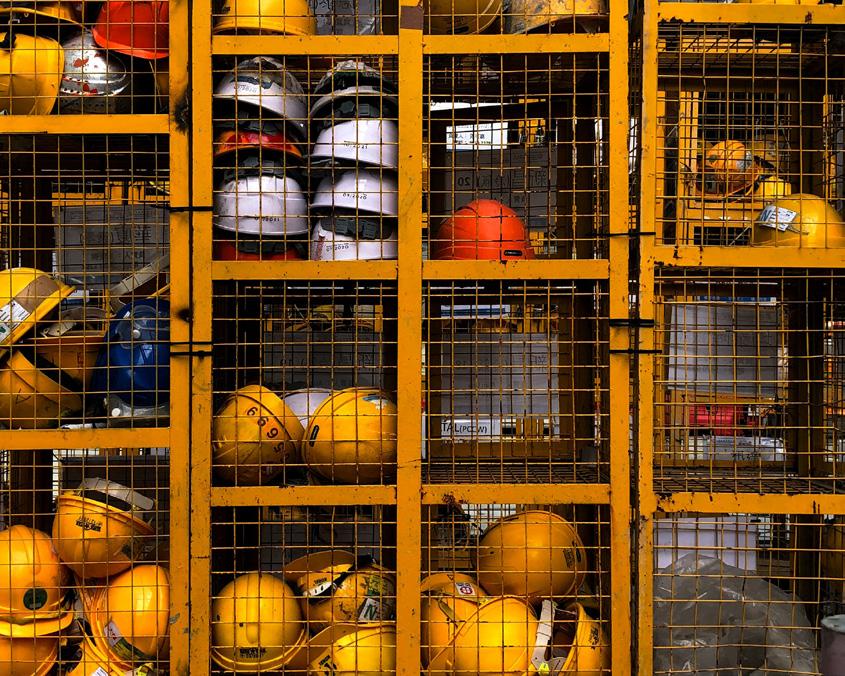
With all the complications they can bring, tread carefully if you want to obtain your drivers’ medical exam forms.
Anthony Morreale is the owner of Tri-State Safety Solutions, a provider of health, safety, and environmental compliance training and consulting as mandated by city and state agencies.
BY H.K. CARR
of body functions. These conditions must be corrected as quickly as possible to prevent permanent damage. The selection of appropriate cold-weather clothing based on the wind chill, humidity, rain, sleet, snow, or the combination of all or any of these and the work to be accomplished will all affect the selection. In addition to the appropriate selection, we must consider how the clothing will affect the ability to accomplish our required job functions. We are told layered clothing is the best way to protect us from extreme cold, but layers can be cumbersome, hamper our dexterity, and cause an additional safety concern.
Types of cold stress and how it affects the body will vary based on the environment and time of exposure. They include:
• Chilblains: causes painful swelling of fingers, toes, and ears, and is usually one of the first signs of cold impair ment
• Hypothermia: affects the entire body, slows body func tions and clear thinking, may lead to a serious medical condition if not treated as quickly as possible
• Frostbite: freezing of a body part that may cause cell and
FALL 2022 13
POP & ZEBRA, UNSPLASH
PHOTO BY
SAFETY PERSPECTIVES
nerve damage, usually affecting extremities and exposed skin
• Trench Foot: occurs when feet are wet and exposed to cold temperature over long hours in the field in wet socks and boots. The need for dry clothing is imperative.
Suggestions for cold (wet) weather include:
• Three layers of loose-fitting clothing, with an inner layer designed to wick moisture from the skin
• Middle layer of wool or synthetic material for insulation
• Outer layer: wind, rain, and snow protection
Additional considerations include:
• A hat to prevent heat loss and moisture protection
• Insulated gloves designed to allow for work activity; may need to be waterproof
• Insulated and waterproof boots
Today we have several portable devices designed to keep the worker warm. Hand and foot warmers, hard hat liners, and
RISK MANAGEMENT
LET IT SNOW, LET IT SNOW, LET IT SNOW
The world of insurance is fast and furious. It will not stop moving forward for anyone or anything. While the East Coast is watch ing for hurricanes, insurance has fast forwarded to winter snow storms. The men and women who live in the world of insurance are always working in the future. They are constantly working towards future deadlines, expiration dates, weather conditions, loss predictions, payments. and cancellations.
While it is still somewhat balmy out, there is a morning chill in the air signaling that fall weather is upon us with winter not too far away. To your insurance agent thinking in the future, winter means snow, and snow means snow removal, and snow removal means snow removal claims, which require a snow removal policy. Now is the time to purchase your snow removal policy.
So why purchase a separate snow removal policy? The sim ple answer is to keep the secondary snow removal business out of your primary business. The reasoning behind this is that any significant snow removal claim skews the commer cial general liability policy costs out of line with the normal cost generated by your operations. When this happens, the tail is wagging the dog. You pay more for the overall policy, and the additional cost reduces operational profitabil ity; to maintain that profitability you must increase your price.
Snow removal has its good years and bad years for both the insured and the insurance company. When there is plentiful snow in the winter, your snow
warming body belts, among others. Some workers may find these help to accomplish their job safely. Employees should think of limiting times of exposure, selecting warmer time of days for certain activities, or rotating personnel.
New equipment in use today may include crew trucks with heat and AC. Most machines today come with heat and AC for operator safety and comfort that should be maintained for a more productive work site. However, we must understand some of our work force does not have the luxury of an environmentally con trolled work activity.
I can tell you from experience the worker today has a great many options to make a safer and more comfortable worksite. I did not have many of these options available to me, and my body lets me know every day. Please, for your health now and particu larly in the future, protect yourself and others from the hazards of the environment. This time of year, it is a cold environment.
H.K. “Skip” Carr and his wife, Judy, have operated H.K. Carr & Associates, a training company focused on OSHA compliance and construction safety, for over 30 years.
BY MICHAEL PUGACZEWSKI
removal operations make money. On the other hand, the insurance companies do not make money because more snow generates more claims. For the snow removal contractor who has a large claim, insurance allows them to hold on to their hard-earned profit while the insurance company pays the bill.
When it does not snow, the story reverses. The contractor has paid their snow removal premium but does not generate enough income to cover the cost of maintaining equipment, drivers, equip ment operators, and insurance. However, the insurance company will show profitability from their snow line because there are no claims when there is no snow.
The present problem with snow removal insurance cost is that it does not generate the $5,000 slip and fall claim as it did in the past. Slip and falls, at a minimum, cost 10 times that amount today. If you have had a slip and fall claim, it was probably near $100,000. If you have not had a claim, check the internet and you will see attorney advertisements bragging about $525,000 or $750,000 claim settlements. An icy sidewalk or parking lot can result in slip and fall injuries to the head or back, fractured limbs, and wrist and ankle sprains. Any of these injuries have the poten tial for a large payout.
Like everything else, there are degrees of risk. Potentially high-risk areas for snow claims are apartment building sidewalks and parking lots, strip malls, box stores, and malls. Anywhere there is high pedestrian traffic there is a high potential for a slip and fall claim. This also includes stand-alone retail stores as well. If you are just doing residential snow removal, you must think about the residents, trade people, mail carriers, package deliver ies, and so on. Residential operations are not immune to claims.
If you are going to remove snow, make sure you buy a snow
PHOTO BY LOIC LERAY, UNSPLASH

removal policy. If you are sub-performing the work and someone tells you that you don’t need a snow policy, have your attorney and insurance agent read the contract you are thinking of signing. Keep in mind it is extremely rare that the upstream entity will assume your sole negligence. Even if they do, there is no guarantee that they will follow through.
Next time we will write about what you can do to eliminate or reduce your snow claims exposure. We will discuss the risk man agement tools you need with tips to help you reduce the risk of a loss. We will give you specific steps you can take to protect your company from snow removal claims that you can easily include in your snow removal operations.
Mike Pugaczewski is chief executive officer and co-founder of M. Adams & Associates, Inc. The company provides insurance prod ucts and services custom-built for LICA construction companies.
Meeting the Training / Consulting Needs for Contruction Since 1985
Par�al list of training programs available OSHA 10 & 30 hour for Construc�on Heavy Equipment Operator training & evalua�on (Forkli�, Backhoe, Mini-Excavator)


Site Specific training developed to meet your needs.
Competent Person Trench & Excava�on Health Hazards in Construc�on Hazwoper – Hazardous Waste Construc�on Safety Officer
Fall Protec�on-Competent Person Construc�on General Safety Teaching Your Own – Instructor Training
If you don’t see the program you need, let us know and we will develop it specific to you needs
DEVELOPING A STRONG BENEFITS PACKAGE TO RETAIN AND RECRUIT WORKERS
According to the U.S. Chamber of Commerce, the Covid-19 pan demic caused a major disruption in America’s workforce, some thing that many experts have referred to as “The Great Resigna tion.” In 2021, more than 47 million American workers quit their jobs, many of whom were in search of an improved work-life bal ance, workplace flexibility, increased compensation, and a strong company culture.
Upon closer examination, what has happened to the labor force can better be described as “The Great Employment Reshuf fle,” since hiring rates have outpaced quit rates since November 2020. Therefore, many workers are quitting their jobs but many are getting re-hired somewhere else. During the reshuffle, jobs that require in-person attendance and traditionally offer lower wages have had a more difficult time in retaining workers. The hospitality and retail industries for example have had the highest quit rates since November 2020.
However, at the same time the hiring rate has been even higher. The leisure and hospitality industry lost more than 1 million workers in November 2020, but 1.2 million people were hired into the industry that very same month. When examining the labor shortage across different industries, the transportation, healthcare/social assistance, and the accommodation and food service sectors have had the highest numbers of job openings.
Despite the high number of job openings, the transportation and healthcare/social assistance sectors have maintained a rela
BY WORLD INSURANCE
tively low quit rate. On the other hand, the food service sector has struggled to retain workers and has experienced consistently high quit rates.
According to employment consultants, the best way to both retain current employees as well as attract new employees is to develop and showcase a robust benefits plan. Providing a competitive salary is not the “end-all, be-all” it once was. It is important to keep a pulse on what your competitors offer in the way of health coverage benefits, retirement plans, wellness programs, and other benefits so that you can ensure your offerings are in line.
A Solution: The LICA Health Plan
The Land Improvement Contractors of America (LICA) recently launched a health plan specifically designed to help LICA mem bers keep their healthcare coverage costs down while retaining their current workforce and attracting new employees. With that in mind, LICA members would be well served to look at the LICA Health Plan which has been designed specifically to meet the needs of the LICA Members.
For more information, contact the World Insurance associates Vincent Basciano at 973- 871-1512 or vincentbasciano@worldin surance.com, and Terence Gorman at 848-456-8600 or terence gorman@worldinsurance.com.
FALL 2022 15
LICA MEMBERS
OVERCOMING SUPPLY CHAIN BARRIERS
As the pandemic draws to a close, demand for construction and manufacturing is higher than ever. The supply chain just can’t keep up with the needs of the industry. In fact, the supply chain is the only thing holding our industry back from a substantial boost in sales.
It’s a tough problem for all companies and our partners who are building a better America. How do we overcome this obstacle?
At Highway Equipment Company, we challenged ourselves with that question. Here are six tips we’ve used to overcome sup ply-chain shortages while building better relationships with our partners.
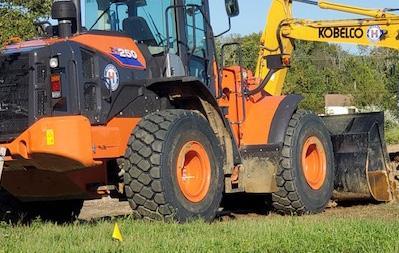
Invest in our inventory parts
One delayed replacement part can set back an entire project, so stock up on backups before you need them. Highway keeps a mas sive inventory of 90,000 parts, with a priority on mission-critical items. That way, our partners can get back to work without delay.
Partner with OEMs
Manufacturers and distributors need each other to deliver for our partners. We’ve focused on communicating our shared long-term goals and growth expectations. These honest, and sometimes tough, conversations have helped us work together to prioritize supply by region and have even helped us secure urgent parts.
Preventative maintenance = uptime
Equipment only lasts if you take good care of it. Read each manu al carefully, and regularly maintain your machinery. These simple steps will make your equipment last much longer and reduce your reliance on new equipment or delayed replacement parts. We in vest heavily in maintaining our equipment to top standards. You should, too.
Save with data
Telematics use on-board sensors to monitor your equipment remotely. It can help you identify issues before they become problems and can even order parts before they break. Highway offers free monitoring, to maximize your uptime. Get your data and make sure your partner is watching it.


Consider rental options
If supply-chain delays are a major concern, talk to your distribu tor about different equipment options. Rental equipment may be available sooner and give you more options for your long-term projects. Rent-to-own options may give you the opportunity to maximize the return on your current projects while offering the flexibility for future profit. Just make sure your renter is maintain ing your future equipment at the highest standards.
BY TIM BASS
Communicate constantly Our “secret sauce” is communication. We know the supply chain can make it hard for everyone. Our approach is to always be clear and have empathy for our partners. In our experience, our custom ers trust us because they know we are doing our best and keeping them “super-informed.” Proactive communication helps every one make better, more informed decisions, even when the news is tough. At Highway, we call that being a joy to work with, and we expect it from everyone on our team.

There’s no one-size-fits-all solution, but these steps have helped our company deliver for our partners since 1933. Our take away is that when you put your customer first, are urgent about their uptime, and proactively communicate, it’s always a WINWIN-WIN.

Tim Bass is the marketing director for Highway Equipment Com pany, one of the country’s leading sales, rental, parts, and service providers of highway, construction, oil and gas, mining, quarry, and industrial material-handling equipment.
Scheideler Excavating Co.
BY TINGEY
16 FALL 2022 EQUIPMENT
MANUAL
PHOTO PAGE 16 COURTESY OF HIGHWAY EQUIPMENT; PHOTO PAGE 17
HOW DO I ADDRESS RETIREMENT CLAIM DENIALS?
The government does not require employers to provide retirement plans, but for employers who choose to provide this benefit, it is vital to understand the processes involved in retirement claims. Under Employee Retirement Income Security Act of 1974 (ERISA) regulations, an individual’s claim for retirement under an employee benefit plan must be in writing, requesting a benefit using the plan’s procedures for filing claims. Once a claim has been filed, a plan must notify claimants of its decision within a reasonable period, but no longer than 90 days after the plan receives the claim. A plan may have an extension of up to 90 days if the plan administrator determines that an extension of time is warranted. The extension notice must be provided to the claimant before the original deadline, specifying the special circumstances requiring the extension and the date when the plan expects to make the initial decision.
When claims are denied, the claim decisions must be provided in written or electronic form. Under regulations issued by the Department of Labor (DOL), a claim denial notice must include:
• Specific reasons for the denial
• A reference to the specific plan provisions on which the denial was based
• A description of any additional information needed by the claimant
• A description of the plan’s appeal procedure and dead lines as well as a statement of the claimant’s right to sue under Section 502(a) of ERISA
When a Denial is Issued
When a denial happens, it’s important to provide a full, fair review of the claim denial to the employee. After notice of denial, claimants must have at least 60 days to file an appeal. Within this time frame, claimants should be given:
• An opportunity to submit written comments and docu ments on the claim
• Access to and copies of all relevant records for free upon request
• A review that considers all submitted information
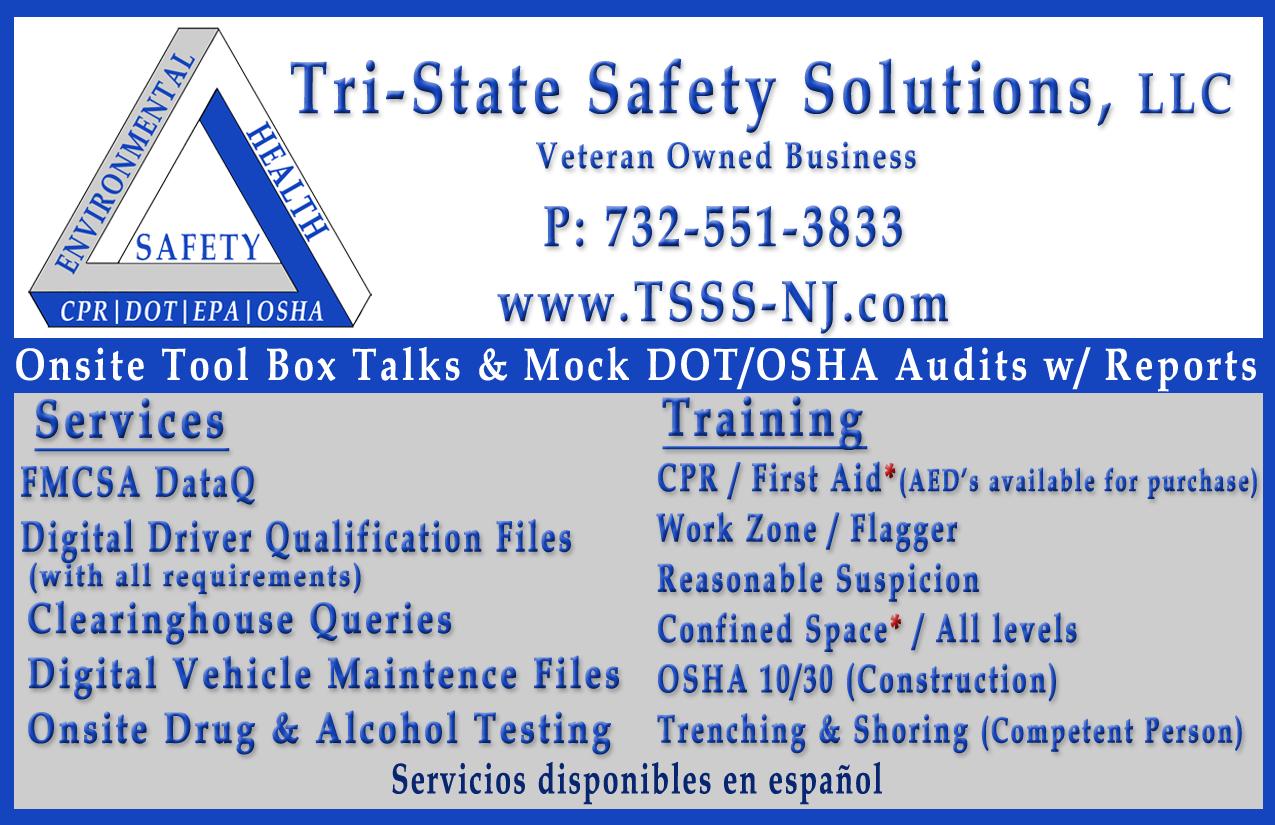
Filing an Appeal
A plan must notify claimants of its appeal decision within a rea sonable period, but no longer than 60 days after the plan receives the claim. The plan may have a 90-day extension if there are spe cial circumstances and written notice is provided to the claimant before the original deadline. The extension notice must specify in writing the special circumstances requiring an extension and the date when the plan expects to make its appeal decision.
BY LISA GINGELESKIE
Appeal Review Determination
Notice of appeal review decisions must be in either written or electronic form and contain the following:
• The specific reason(s) for the denial: • A reference to the specific plan provisions on which the appeal denial was based • A statement that the claimant may receive on request all relevant records for free • A description of the plan’s voluntary procedures and deadlines, if any • A statement of the claimant’s right to sue under Section 502(a) of ERISA
Lisa Gingeleskie is a labor and employment attorney with Lind abury, McCormick, Estabrook & Cooper, P.C. The company pro vides litigation and transactional counsel to a broad spectrum of clients in the construction industry. Lisa can be reached at lgin geleskie@lindabury.com.

PHOTO PAGE 16 COURTESY OF HIGHWAY EQUIPMENT; PHOTO PAGE 17 BY TINGEY LAW FIRM, UNSPLASH
LEGALLY SPEAKING
IN LABOR LAW, CHANGE IS THE ONLY CONSTANT
No one can accuse this administration of sitting on its laurels, especially in the area of labor law. Despite the Biden Administration’s setback in failing to pass the PRO Act earlier this year, the National Labor Relations Board has picked up the labor law reform baton and given notice that it intends to review or overrule through rule-making or case law several important workplace decisions by recent NLRB panels, many of which affect non-union workplaces.
Union Buttons
In an August 2022 ruling against Tesla, the board held that Tesla violated its employees’ Section 7 rights by enforcing a policy prohibiting employees from substituting a shirt bearing a union insignia for Tesla’s plain black T-shirt. The board held that prohibiting an employee from displaying union insignia in the workplace is presumptively unlawful, and an employer has a heightened burden of proof to show that its prohibition is necessary to maintain production or discipline. The board found that Tesla failed to present the necessary special circumstances to rebut the presumption that its policy requiring only its Teslaapproved T-shirts was unlawful.
Mandatory Arbitration Agreements
Earlier this year the board notified the public that it would review the Board’s policy on whether mandatory arbitration agreements that contain confidentiality clauses violate employee Section 7 rights to engage in concerted protected activities. In 2019, the board, with a Republican-appointed majority, held that employers are not prohibited by federal labor law from informing employees that failing or refusing to sign a mandatory arbitration agreement will result in their discharge, or from promulgating mandatory arbitration agreements in response to employees’ opting into a collective action under the Fair Labor Standards Act or state wage-and-hour laws. The NLRB indicates that it will revisit these decisions in the near future.
Workplace Behavior Rules
Also, in early 2022, the board gave notice that it was once again considering a new legal standard for determining whether employer work rules that are non-discriminatory on their face violate Section 7 rights indirectly by inhibiting employees from joining together for mutual aid and protection. Employer policies the NLRB is targeting include policies that require employees to observe harmonious behavioral standards in the workplace. Existing board rules were established in two board decisions, in 2017 and 2019. The current board now intends to take aim at not only employee behavioral rules, but also rules relating to confidentiality of employer investigations, enforceability of non
BY PATRICK MCGOVERN
disparagement clauses in employee agreements, and rules against moonlighting and outside employment.
Employee Misclassification
Another major bridgehead is the test for independent contractor status. Last December, the NLRB gave notice that it was reconsidering a 2019 NLRB decision which eased an employer’s burden of proving that its workers are independent contractors, as opposed to payroll employees. The test case before the Board is The Atlanta Opera. Emphasizing how timely this issue is, on October 11, the Biden Administration’s Labor Department proposed overhauling the current federal rule that determines whether a worker is an employee or an independent contractor. The existing rule requires an analysis of the nature and degree of the worker’s control of his or her activities and opportunity for profit. The proposed rule would switch the focus of the analysis to whether the worker is economically dependent upon an employer for work. The proposed rule, if implemented, would likely have a broad sweep and require many 1099 workers to be reclassified as W-2 employees.
Union Dues Checkoff
In a particularly pro-union decision earlier this month, the NLRB reversed a 2019 NLRB decision and held that a labor agreement’s dues checkoff provision continues in effect past the expiration of the labor agreement. The board held that dues checkoff arrangements continue for a rea sonable time after contract expiration. This decision should take the pressure off of union negotiators to reach a new agreement quickly, to avoid loss of members’ dues payments.
With all of this change, it is little wonder that on October 6, the NLRB reported that during the government’s fiscal year ending September 30, union representation petitions filed with the NLRB increased by a factor of 53 percent from the prior fiscal year, from 1638 petitions to 2510 petitions.
As the proverb goes, you reap what you sow.
For 30 years, Genova Burns has partnered with companies, businesses, trade associations, and government entities on matters in New Jersey and the greater northeast corridor between New York City and Washington, D.C. If our firm can be of assistance, please reach out to Patrick McGovern at 973-535-7129.
PHOTO BY TINGEY LAW FIRM, UNSPLASH

18 FALL 2022

J. KRAMER LANDSCAPING / JUSTIN KRAMER MEMBER
For Justin Kramer, family is important. Kramer says that without his family’s support, he wouldn’t own his successful business, J. Kramer Landscaping, which does everything from hardscape design to commercial snow removal throughout Northern New Jersey. As a kid growing up in Sussex County, he watched family members work in the construction industry, tagging along with his uncle Bob, cousin Danny, and his grandfather Lew as they repaired sewer and water main breaks. When Kramer decided he wanted to launch his own grass-cutting business, he saved the money he earned from helping his grandfather with painting jobs to buy a push mower and trailer. But at just 15, he relied on his mother and grandfather to drive him around town to his gigs for the first couple of years. Thanks to their support, Kramer had enough customers following high school graduation to pursue his business full time, and when he was 21, he decided to expand his services and grow the company even more.
Today, J. Kramer Landscaping provides landscaping and hardscaping design, property maintenance, excavating services, snow removal, and emergency water and sewer repairs for resi
dential, commercial, and industrial customers. Over the years, the company has built retaining walls, patios, and pool waterfalls, and completed maintenance for properties like Sussex County Com munity College. It’s a long list, but as a business owner who is hands-on and prefers to be working out in the field with his em ployees, Kramer has a few projects that stand out.
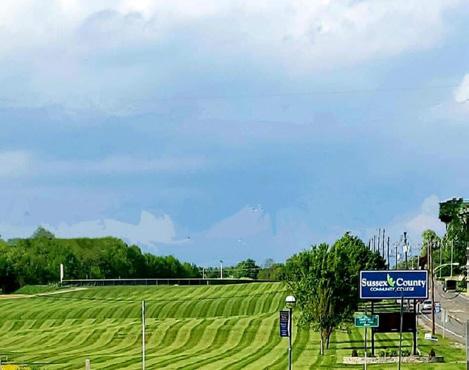
“I like getting up every morning knowing I have a challenge ahead of me,” he says. “And those are the construction projects, the projects that have plans.”
In the past 10 years, the company has taken on more pool hardscape jobs, and Kramer says he enjoys those opportunities to build someone’s backyard dream, starting from nothing and creating a finished product the customer is happy with. And the customers are happy. Over 90 percent of the company’s business comes from referrals, and J. Kramer Landscaping is now doing work for the children of clients they did jobs for 20 years ago. As someone who likes to help others, Kramer loves establishing those relationships.

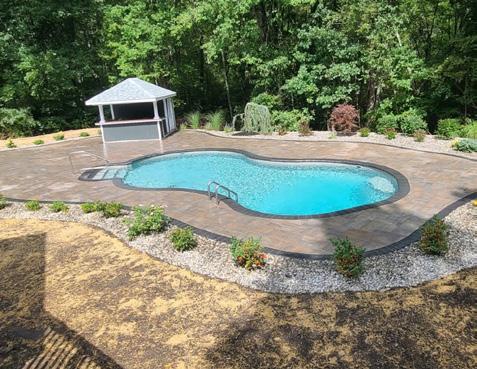
“We don’t just sign a paper and come in to do the job,”

20 FALL 2022
SPOTLIGHT
I LIKE GETTING UP IN THE MORNING KNOWING I HAVE A CHALLENGE AHEAD OF ME.
“ ”
Kramer says. “We’ve had dinner or lunch with clients when we’re finished. We really try to build a connection with our customers.”
While he enjoys creating beautiful backyards in the summer, Kramer actually prefers winter’s colder weather and the snow that comes with it. He used to spend time snowmobiling in upstate New York, but now if it snows, he’s working. The snow removal portion of J. Kramer Landscap ing has become a large part of the company’s business (Kramer has about 25 employees in the winter compared to eight in the summer), and he hopes to grow it even more in the future.
As he continues to scale the company, Kramer now has another supporter by his side: his girlfriend, Rebecca Smiecinski, who he met on a job site. Kramer and his crew were running water lines for a barn where Smiecinski was completing a job with her landscaping company. Today, in addition to owning an auto repair business, Smiecinski has helped Kramer with his own company, working in the office and doing the bookkeeping. For the couple, work is nonstop, but Kramer has found time for a small side venture: running a funnel cake stand at the Warren County Fair. (Smiecinski hails from Warren
County.) During the week of the fair, J. Kramer Landscaping employees work half days doing their regular gigs, then head up to Warren County and work the stand. Over the years, Kramer has also given back to his hometown’s Sussex County Farm and Horse Show (also known as the New Jersey State Fair), donating time, money, labor, and machines.
“I have always loved going to the fair since I was a kid,” Kramer says. “I actually go every day to the fair.”
Today, Kramer counts NJLICA as another one of his company’s supporters. He first became a member three years ago, when New Jersey’s prevailing wage requirements went into effect. With J. Kramer Landscaping maintaining the campus of Sussex County Community College, the company needed to adapt to the new rules.
“We’re working out in the field every day and we don’t nec essarily know everything that’s changing,” Kramer says. “But NJLICA is on top of it. The meetings are very helpful, and we find out what certificates or licenses we might need. Now, not only do we run an apprenticeship program, but I’ve met a lot of people in the group from different areas of the trade, and I’ve learned a lot. The experience has been phenomenal.”
Kelley Freund is a freelance writer based in Virginia.
Photos page 20:
Top photos, l-r: patio and landscaping in Oak Ridge; lawn maintenance at Sussex County Community College

Bottom photos, l-r: pool patio and waterfall in Jackson; patio and fire pit in Fredon
Photos page 21:

Middle photo: Justin Kramer and his girlfriend, Rebecca Smiecinski
Bottom photo: retaining wall in Parsippany
FALL 2022 21
“
WE’RE WORKING OUT IN THE FIELD EVERY DAY AND WE DON’T NECESSARILY KNOW EVERYTHING THAT’S CHANGING. BUT NJLICA IS ON TOP OF IT. NOW, NOT ONLY DO WE RUN AN APPRENTICESHIP PROGRAM, BUT I’VE MET A LOT OF PEOPLE IN THE GROUP FROM DIFFERENT AREAS OF THE TRADE, AND I’VE LEARNED A LOT.
”
NJLICA
NJLICA TO ADD TRUCK DRIVER, HEAVY TRADE TO APPRENTICESHIP PROGRAM
New Jersey Land Improvement Contractors of America (NJLICA) is proud to announce that it recently received approval from the United States Department of Labor (USDOL) to offer an apprenticeship program for the truck driver, heavy trade, Rapids Code 0980.
Apprentices in NJLICA’s new one-year truck driver, heavy program will receive a combination of on-the-job training and related technical instruction under the super vision of journey-level craft persons and trade profession als. Apprentices will earn wages and perform productive work, while learning the practical and theoretical aspects of this highly skilled occupation. Upon completion of the program, apprentices will not only have valuable work experience, but they will also receive a recognized indus try credential that will allow them to continue in the field and to advance their career over time.
New Jersey law requires that public works contrac tors participate in a USDOL-approved apprenticeship program for each apprenticeable trade that they employ on any public works project in order to obtain or renew public works contractor registration certificates. To sat isfy this requirement, contractors can choose to sign a

collective bargaining agreement with a trade union that maintains an apprenticeship program, join an employer association/industry group that maintains apprenticeship programs, or create their own program. Recently, the New Jersey Department of Labor and Workforce Devel opment (NJDOLWD) announced that it would enforce truck driving as an apprenticeable trade. As a result, NJLICA developed this program for the benefit of its membership.
This is the third apprenticeable trade offered by NJLICA. Participating in NJLICA’s registered appren ticeship programs will satisfy the requirements to renew your public works contractor registration for the fol lowing apprenticeable trades: construction craft laborer, heavy equipment operator, and truck driver, heavy.
NJLICA is currently accepting registered apprentic es and yearly ERISA Trust contributions for these trades. For registration and/or participation information, please contact NJLICA at 973-630-7600 or email buddy@gov isionstrong.com.
-By Francis Kenny, associate with Littler Mendelson, P.C.
UFG INSURANCE AND PRINS INSURANCE ANNOUNCE STATE LICA INSURANCE PROGRAM 2021 DIVIDEND RESULTS
UFG Insurance strives to uphold its policyholder promise to ensure businesses are financially prepared to overcome losses with its trustworthy insurance protection. The carrier is proud to have fulfilled this important promise for 1,385 members of the State LICA Insurance Program last year.
LICA contractors who participate in the program have access to UFG’s trusted insurance products, gold-standard service from the UFG claims team, dedicated risk control assistance and other perks like the opportunity to earn a safety group dividend* based on loss ratio.
Last year, East Coast members of the State LICA Insurance Program (Kentucky, New Jersey, Ohio, and Pennsylvania) earned a 4 percent safety dividend. The group loss ratio for Midwest members (Arkansas, Iowa, Illinois, Indiana, Kansas, Minnesota, Nebraska, Missouri, North Dakota, South Dakota, and Wiscon sin) did not qualify for a dividend in 2021.
“We congratulate the East Coast LICA contractors in our program on their great 2021 results, which earned them a policy holder dividend,” says UFG Insurance Marketing Manager and State LICA Insurance Program advocate Christine Starr. “Every step forward in the name of safety is worthy of celebration, and we appreciate the efforts being made by LICA members across the country that demonstrate a commitment to safe work envi ronments.”
UFG’s risk control services will continue to champion sup port for the businesses insured, helping them foster the safest settings possible with fewer and less severe losses, which will undoubtedly continue to improve results.
The State LICA Insurance Program has been a trusted pillar for LICA members for more than 25 years and counting, with more than $4.9 million in dividends paid during that time. The exciting momentum continues this year as the next phase of this
dependable program has been ushered in.
“The Midwest State LICA Insurance Program and the East Coast State LICA Insurance Program have unified to become one robust State LICA Insurance Program in 2022,” explains Starr. “This means we’ll have even more streamlined ways of working together, today and tomorrow.”
UFG is honored to serve as the recommended insurance com pany for the State LICA Insurance Program in solid partnership with Prins Insurance. Prins has served the insurance needs of state LICA contractors for more than 25 years.
If you’re interested in learning more about the State LICA Insurance Program or taking part in it, contact Prins at 800-8318545.
About UFG’s State LICA Insurance Program
UFG currently offers insurance to chapter members in: Arkansas, Iowa, Illinois, Indiana, Kansas, Kentucky, Minnesota, Nebraska, Missouri, New Jersey, North Dakota, Ohio, Pennsylvania, South Dakota, and Wisconsin. The State LICA Insurance Program is administered by Prins Insurance Inc. of Sanborn, Iowa.
About Prins Insurance Inc. of Sanborn, Iowa
Prins Insurance has partnered with LICA contractors for more than 25 years to provide an insurance product that gives the opportunity to work with your independent agent while taking advantage of a comprehensive insurance program that focuses on the unique needs of your industry. If you have questions about the State LICA Insurance Program, contact Prins at 800-831-8545.
*The availability of dividends is declared from surplus funds and are not guaranteed.
22 FALL 2022 NEWS
It’s what matters.
You’ve worked hard to construct a reliable business that takes pride in excellent workmanship. That matters. UFG Insurance knows the importance of protecting the reputation you’ve built. As the carrier of choice, we’re proud to offer members of the New Jersey Chapter of LICA a special opportunity to participate in our trusted state LICA insurance program.
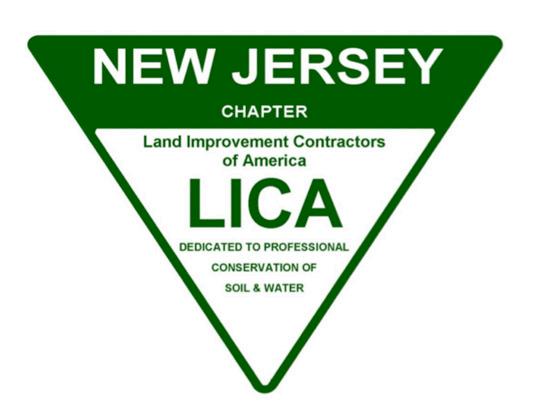
Find a UFG agent today at ufginsurance.com.

HARD WORK. RELIABILITY. PRIDE.
Receive products and services tailored to unique industry needs, including comprehensive risk control. Exceptional customer service that doesn’t end when a contract is signed. CEDAR RAPIDS, IA © 2022 United Fire & Casualty Company. All rights reserved.
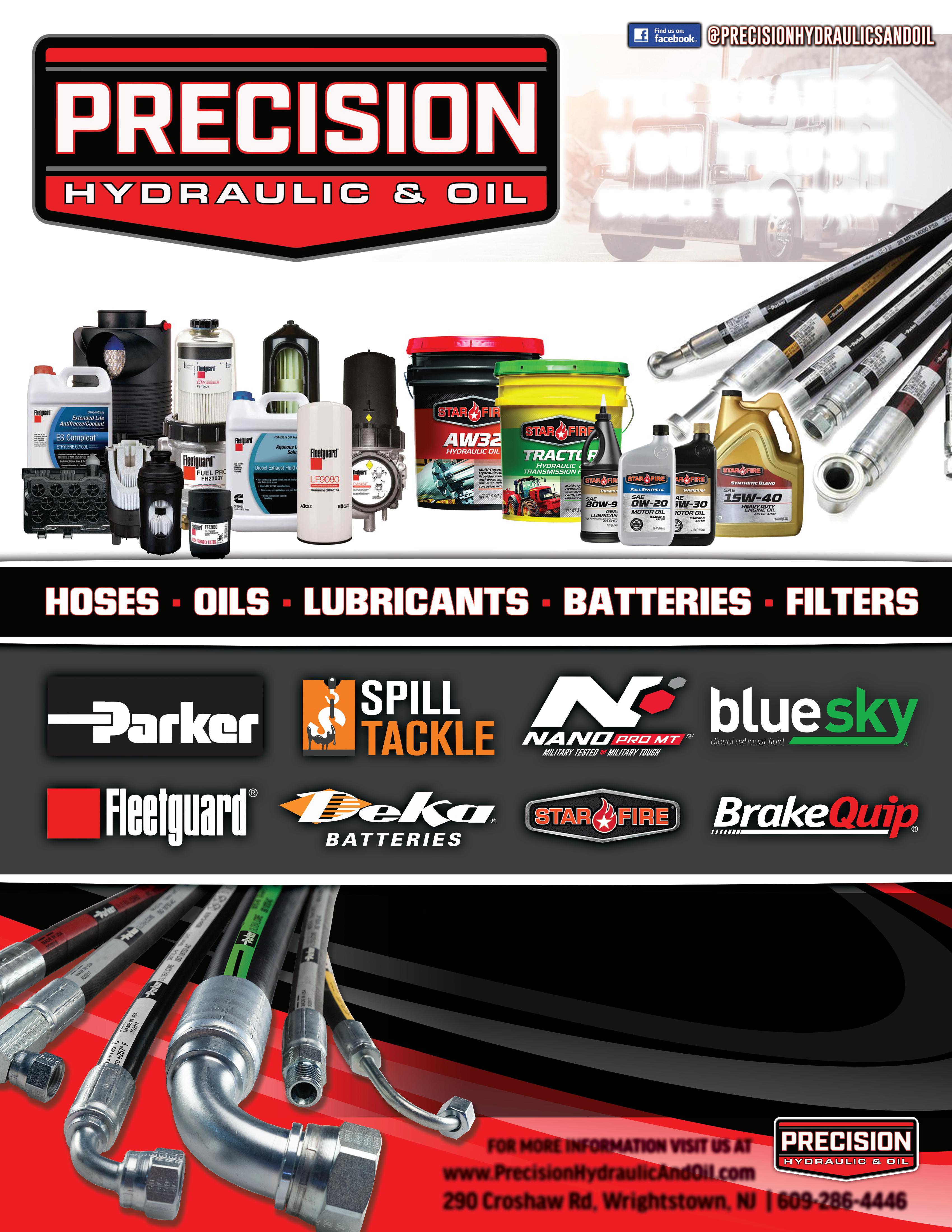

FOR MORE INFORMATION VISIT US AT

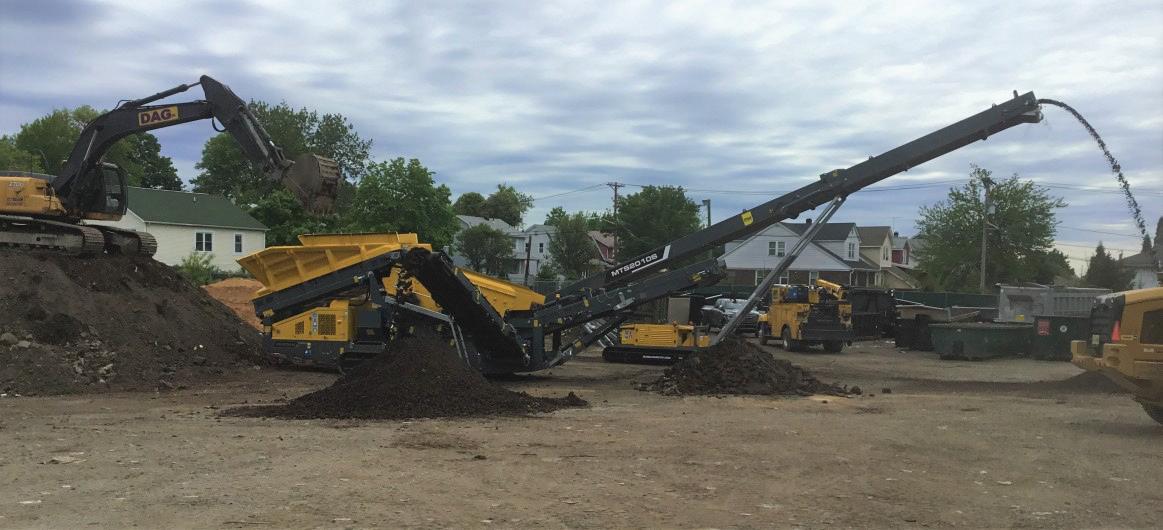

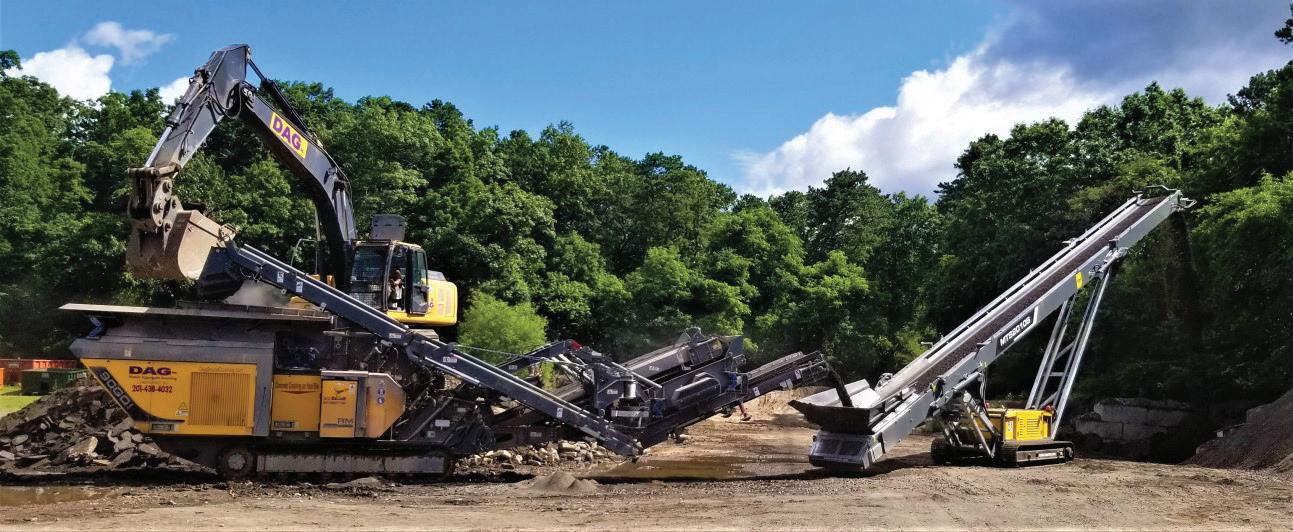


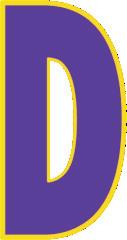
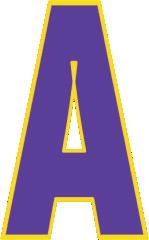















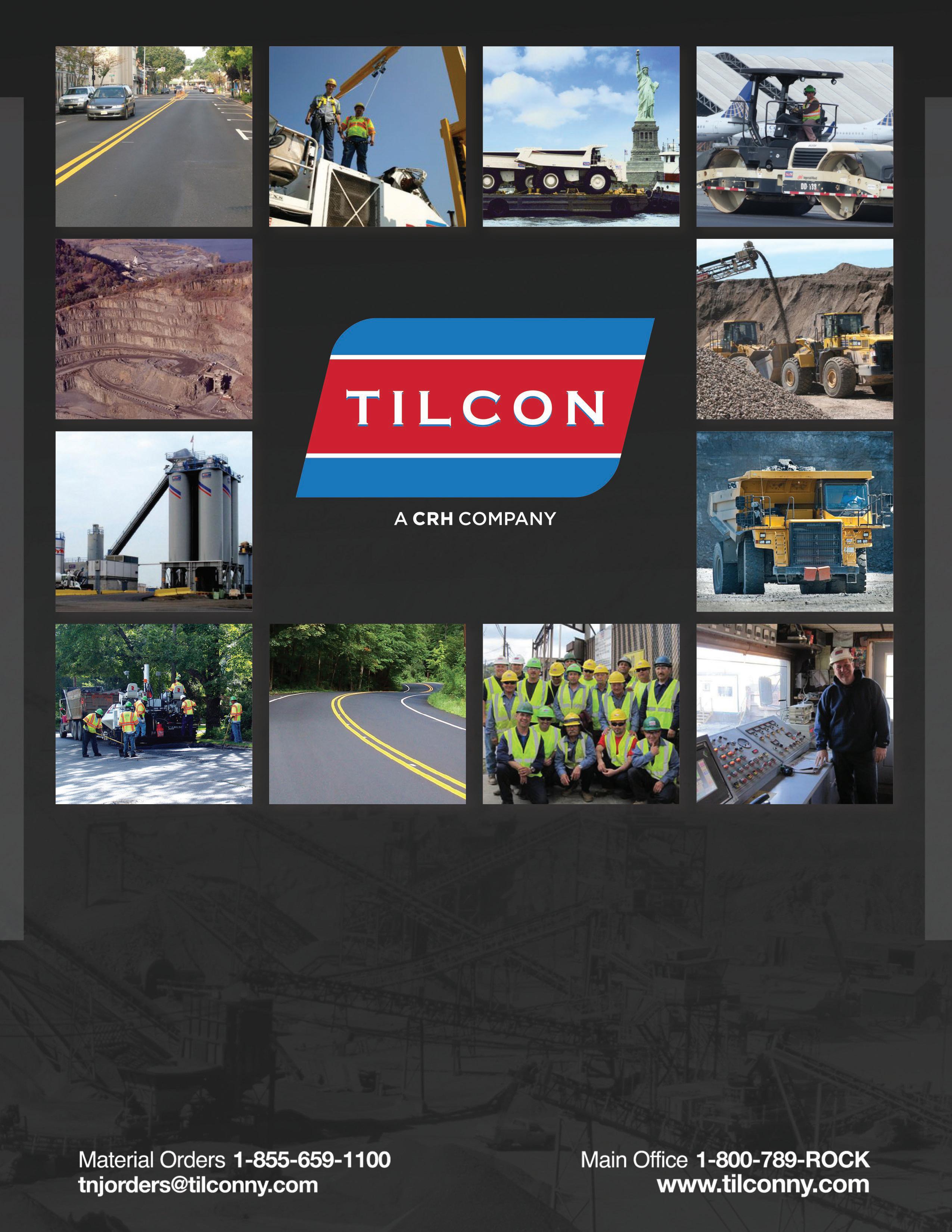



612W PORTABLE TROMMEL SCREEN

The 612W Trommel is a self-contained, dieselpowered, portable screening plant designed to separate topsoil, compost, wood chips, and green waste products. It features a direct open feed hopper with a large 6′-0″ x 12′-0″ rotating drum that creates 160 square feet of screening area. The pile heights created by the side discharge conveyor and oversize conveyor will give the operator hours of uninterrupted processing time.

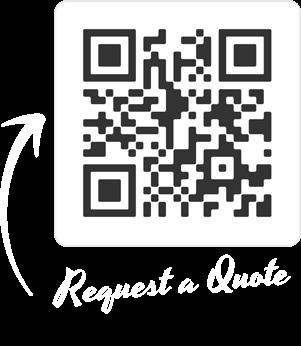


At Highway Equipment, we are SOLUTION PARTNERS. We help you find the right equipment and features, like the Screen Machine 612W Trommel, to get YOUR job done productively and predictably.

SCREEN MACHINE
615 STATE ROUTE 33, MILLSTONE TWP, NJ 08535 | HIGHWAY-EQUIPMENT.COM 732.446.7600 WHY
We make uptime easy, so our partners can build a better America. SOLUTION PARTNERS URGENT ABOUT UPTIME JOY TO WORK WITH
HIGHWAY?
URGENT ABOUT UPTIME SINCE 1933 REQUEST A QUOTE
LOAN EMPLOYEES






Offer underutilized employees on ConX for a small profit. No more laying off employees during slower times. BORROW WORKERS When you need an extra hand to help with a project, search on the ConX database for extra labor to fill that gap. With the ConX labor app, you can spend less time worrying about your labor and more time focusing on growing. GROW YOUR BUSINESS CONTROL YOUR LABOR LICA members receive a $25/month discount FOR MORE INFORMATION CONX-USA.COM BRADL@CONX-USA.com
NEW MEMBERS
GROWING
Contractor Members
Angelo’s Paving, Inc. Rita Ciaglia West Long Branch, N.J.
Angel’s Paving & Concrete, Inc.
Angel Gonzalez Elizabeth, N.J.
Ascend Contracting Corp. Antonio Giacone Warren, N.J.
Book It Equipment LLC
Jake Book Phillipsburg, N.J.
Earth Works, Inc. Jeff Ciarcia Farmingdale, N.J.
Frank J. Scarola, Inc.
Frank Scarola North Arlington, N.J.
Golf Range Netting, Inc. Karianne Ramsay Tarpon Springs, Fla.
InterClean Equipment LLC
Marianne Allen Ypsilanti, Mich.
J. Manzo, Inc.
Joseph Manzo Matawan, N.J.
J Van Peenen, Inc.
Jacob Van Peenen North Haledon, N.J.
K & J Well Drilling, Inc.
TC Lindmar, Jr. Belford, N.J.
Larry Olejar Trucking LLC
Lawrence Olejar Lavallette, N.J.
Leonardo Contracting LLC
Jose Leonardo Keyport, N.J.
Leon’s Crane Service LLC
Leon Stroffolino West Long Branch, N.J.
Liberty Facilities Services LLC
Ron Iacobucci Berkeley Heights, N.J. MTM Metro Corporation Mike Damevsui Paterson, N.J.
Marlin Construction Services, Inc.
Joseph Pinkava Jackson, N.J.
P3 Generator Services LLC Megan Vaughn Alpha, N.J.
Pacific Contracting Services LLC
Ronny Forleo Lakewood, N.J.
Premier Pool Renovations, Inc.
HP Wertman Doylestown, Penn.
Randazzo Paving, Inc.
Vincent Randazzo South Plainfield, N.J.
Robbie Lane Enterprises Robert Lane Towaco, N.J.
SLR Renewables LLC Sterling Jessop Herriman, Utah
Tri-Season Landscaping & Con struction, Inc. Victor Huljack Scotch Plains, N.J.
V. Mileto Trucking Services LLC Vincent Mileto Piscataway, N.J.
Wicklow & Laurano Landscape & Excavating Contractors John Wicklow Flanders, N.J.
GET INVOLVED
FALL 2022 29
BIGGER AND STRONGER EVERY DAY *26 NEW MEMBERS IN THE THIRD QUARTER
FOR
COMMITTEES: Membership Scholarship Legislative Communications and Marketing Silent and Live Auction
Programming
Social Member Networking/Education Monthly Meetings
Conference Golf
Beefsteak Dinner Holiday Awards Dinner
THE NJLICA BOARD HAS POSITIONS AVAILABLE
THE FOLLOWING
Member
and
Events: State
Classic
NJLICA DUES INVOICES WERE MAILED OUT IN SEPTEMBER. YOUR PROMPT REPLY IS GREATLY APPRECIATED. MANY THANKS FOR YOUR CONTINUED SUPPORT OF NJLICA. A REMINDER THAT THE NJLICA DUES YEAR RUNS FROM SEPTEMBER 1-AUGUST 31. YOUR PAYMENT WILL CARRY YOU THROUGH AUG. 31, 2023.
NJLICA GOLF CLASSIC
For the third year in a row, the NJLICA Golf Classic was postponed a week due to inclement weather. Even with the change of date, over 120 golfers took to the beautiful and challenging course at Black Oak Golf Course. Top team honors were captured by Wallkill Group, Inc. for the second year in a row.

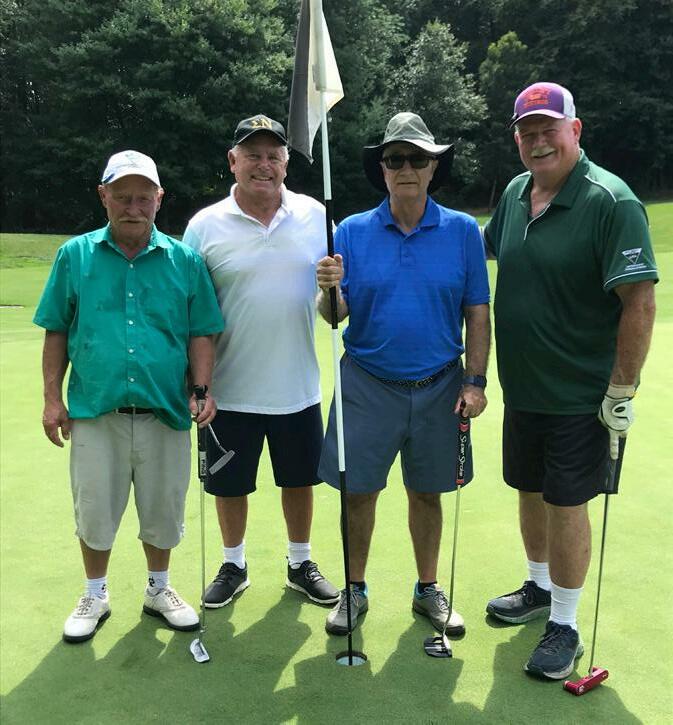
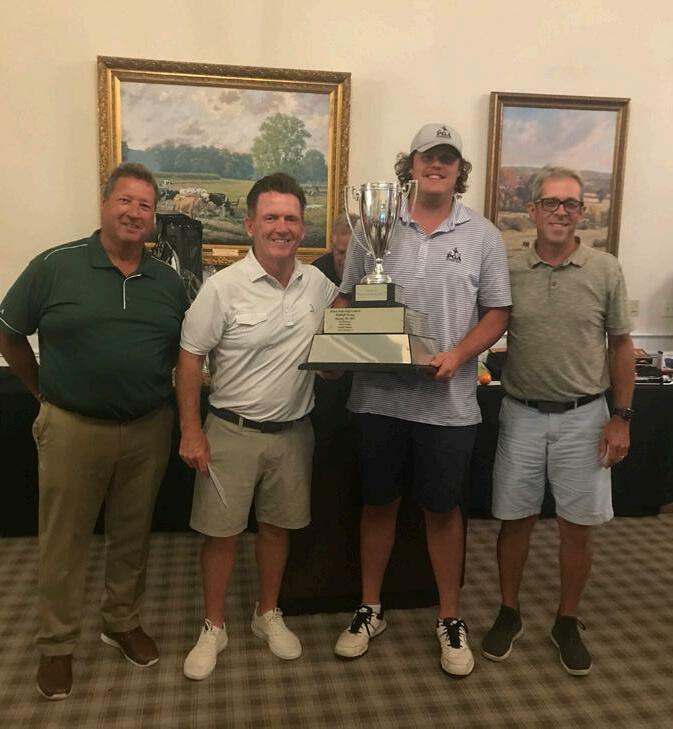

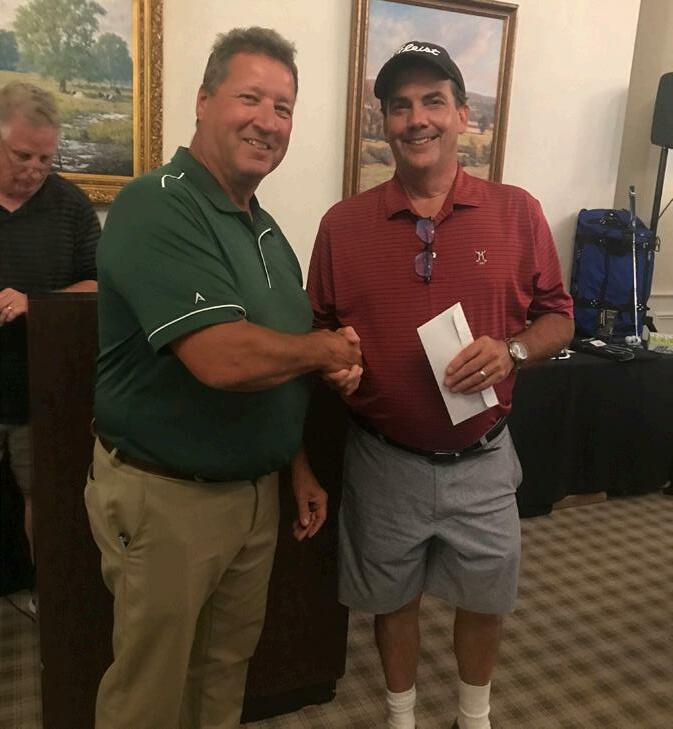
PREMIER SPONSORS
Putting Green Sponsors
Haskell Paving James R. Ientile, Inc. Mountain View Development WithumSmith + Brown
Driving Range Sponsors Highway Equipment Mathis Construction Co., Inc. Tilcon, Inc. Wallkill Group, Inc.
Lunch Sponsors Advanced Drainage Systems JESCO L.N. Rothberg & Son Premier Emissions & Safety Inspections
Hole In One Sponsor True & Associates - A World Company
Closest to the Pin Sponsor Middleton & Company
Longest Drive Sponsors
Bobcat of North Jersey Croft Construction Dave O’Donovan Excavating, Inc. Petrocon
30 FALL 2022
EVENTS
SPONSORS
PREMIER
PHOTOS PAGE 30 AND 31 BY
CATHY FREUND
BUDDY FREUND AND
Invitational Sponsors Investors Bank Prins Insurance True & Associates - A World Company United Fire Group
Golf Ball Launcher Sponsors North American Aggregates Let Us Brand U Player Giveaway Sponsors Sharp Concrete Corp. V.A Spatz & Sons Construction Beverage Cart Sponsors Genova Burns J. Kramer Landscaping J.A. Neary Excavating Salmon Bros.
Fleet of Carts Sponsor The True Agency Registration Sponsor Almasi Companies Ball Sponsor Foley Caterpillar Beverage Station Sponsor Tom Krutis Excavating
TEE AND GREEN SPONSORS
Art Coon Plumbing
Bobcat of North Jersey
Brent Material Company
Caravella Demolition
Carner Bros.
Castle Printing Ledgewood
Church Auto County Concrete D.P.S. Pump Service
DAG Onsite Crushing
EDM LLC
Espo’s Tree & Crane Service
Gerrity Heavy Duty Sales
GT Mid Atlantic
BEEFSTEAK DINNER MEETING, GARY MAHAN TRUCK MUSEUM


Nearly 150 NJLICA contractor members enjoyed 76,000 square feet of museum space that included eight barns and over 200 vintage, fully-restored trucks from 1900 to today. It was a must see for any industry professional and/or truck enthusiast.
Highway Equipment
Hillcrest Paving & Excavating
James R. Ientile
L.N. Rothberg & Son
Lindabury, McCormick, Esta brook & Cooper, P.C. Lubowicki Insurance Agency - A World Company Mikula Contracting
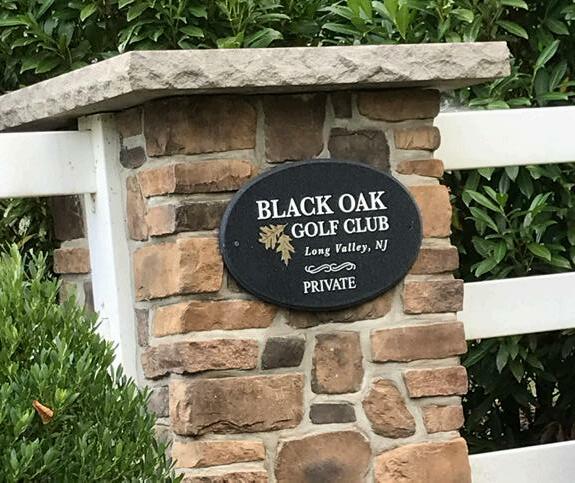
North American Aggregates
Patrick DiCerbo - Northwestern Mutual Prins Insurance Progressive Brick
Renda Roads
Scheideler Excavating
TLC4 Prevailing Wage
Tri-State Safety Solutions
True & Associates - A World Company
Twin Construction Wantage Excavating
APPRENTICESHIP CLASS


The first NJLICA apprenticeship class for laborers and heavy equipment operators began last month. This ini tial classroom instruction is being held on the campus of Hunterdon County Polytech. Equipped with current resources and heavy equipment simulators, this location offers students a state-of-the-art education.


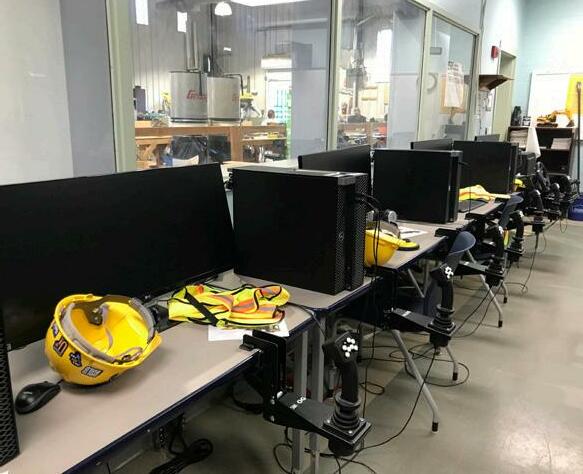
COMEDY NIGHT SCHOLARSHIP FUNDRAISER
NJLICA recently held its annual Comedy Night Scholarship Fundraiser. Held at the Italian American Club in Scotch Plains, attendees were treated to the musical hilarity of Uncle Floyd and the slight-of-hand tricks of strolling magician Will Fern.

FALL 2022 31
FREUND
CATHY
SAVE THE DATES
HOLIDAY AWARDS DINNER
December 8
The Meadow Wood Manor Randolph, N.J.
NJLICA WINTER CONFERENCE UNDER CONSTRUCTION, TBD
NATIONAL LICA CONVENTION
March 11-13, 2023 Las Vegas
CONEXPO-CON/AGG
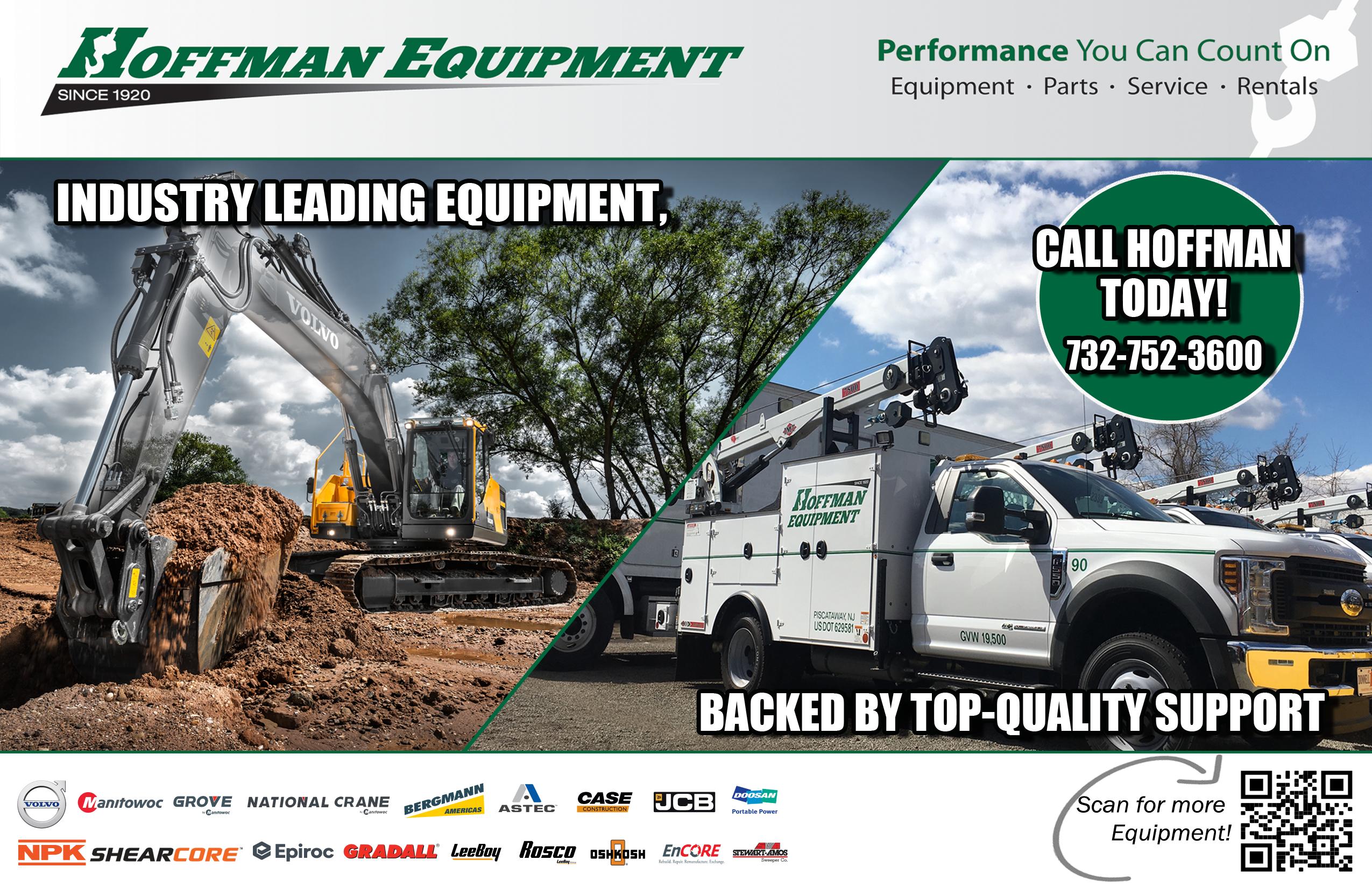
March 14-18, 2023 Las Vegas
PATRONS
VISION STRONG MANAGEMENT GROUP
Buddy Freund
PO Box 166 Succasunna, NJ 07876 973-753-2800
buddy@govisionstrong.com govisionstrong.com

Vision Strong Management Group provides full-service association management services for associations, foundations, societies, and trade organizations.
Add your company name to our Patron Directory. Contact NJLICA Executive Director Buddy Freund at 973-6307600 or buddy@govisionstrong.com.

clients
protect their
valuable assets—their
6 Leigh Street Clinton, NJ 08809 325 North Avenue East Westfield, NJ 07090 Call or email us today to learn more about our offerings. rschielke@trueassoc.com 908-379-2359 We help our
manage and
most
people and their business.
services
providers
• Personal Insurance • Commercial Insurance • Surety & Bonding • Employee Benefits • Financial & Retirement Planning • Human Capital Management Solutions Large Resources. Local Relationships.
As part of the World Insurance Associates family, we offer our clients top products and
from the best
that span all of your personal and commercial needs. You will continue to get the white-glove service and personal touch of your local True agent.






























FALL 2022 35

Why Outsource Your Accounting Save time. Reduce overhead. Improve operational efficiency with best practice workflows. Visit withum.com to learn more about Withum OASyS for Construction Services. withum.com

FALL 2022 37 AD INDEX
cover
7
American Aggregates back cover Precision Hydraulic & Oil 24
Insurance 23 Scheideler Excavating 16 Tilcon 26 Tri-State Safety Solutions 17 True & Associates 33 Withum 36 We are on the lookout for content. Promote your business by sponsoring an ad, or send us articles and photographs to be published in a future issue of The Underground. For more information on how you can be featured, contact:
CONTACT US HEY, YOU! WRITE TO US! Have a story idea? SEND IT! Got a great photo? SEND IT! Have some feedback for us? SEND IT! COMPANY PAGE NUMBER Bobcat of North Jersey 19 Brent Material Company inside front cover Bucket Supply & 35 Equipment Parts DAG Onsite Crushing 25 Genova Burns 12 Grassi Advisors & 3 Accountants GT Mid Atlantic 6 H.K. Carr & Associates 15 Highway Equipment 27 Hoffman Equipment 32 JESCO 34
Lindabury, McCormick, 38 Estabrook & Cooper, P.C. M. Adams & Associates inside back
NJLICA
North
Prins
Buddy Freund NJLICA Executive Director 973-630-7600 buddy@govisionstrong.com
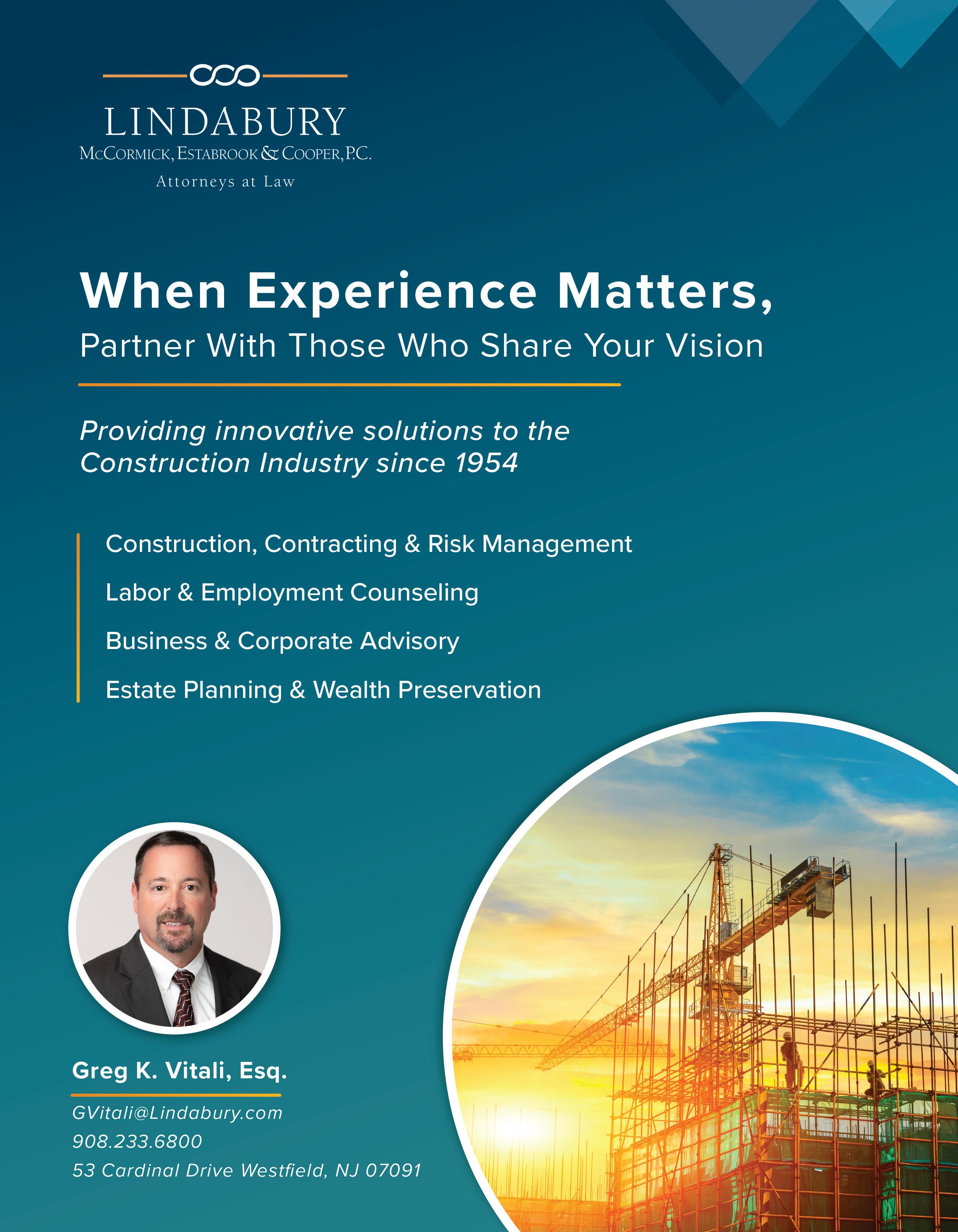


NJLICA PO Box 166
Succasunna, NJ 07876





 Oliveri, CPA, CCIFP, CFE, MBA Partner, Construction Practice Leader grassicpas.com/construction
Oliveri, CPA, CCIFP, CFE, MBA Partner, Construction Practice Leader grassicpas.com/construction













































































































































